
You know. As an aperitif. No images; they'll just weigh you down and spoil your appetite.
Several months ago, actually. I meant to post this as part of an "impressions on recent games" roundup that never came through.
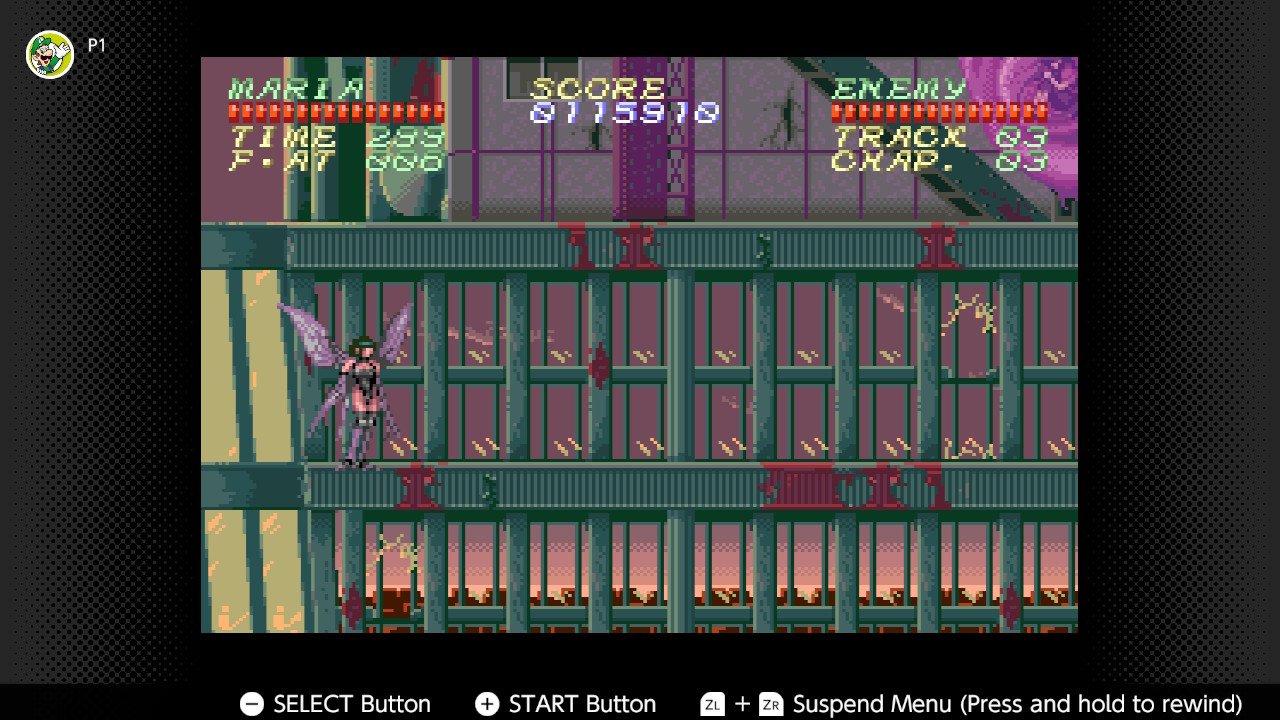
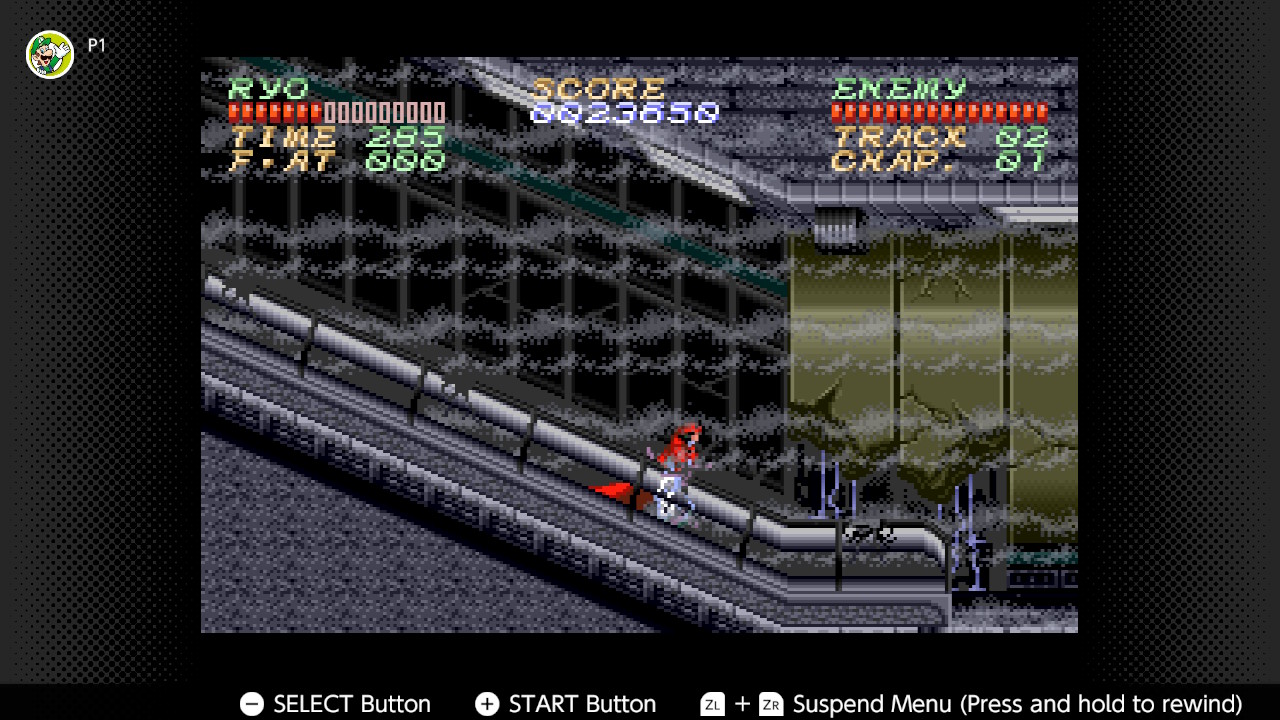
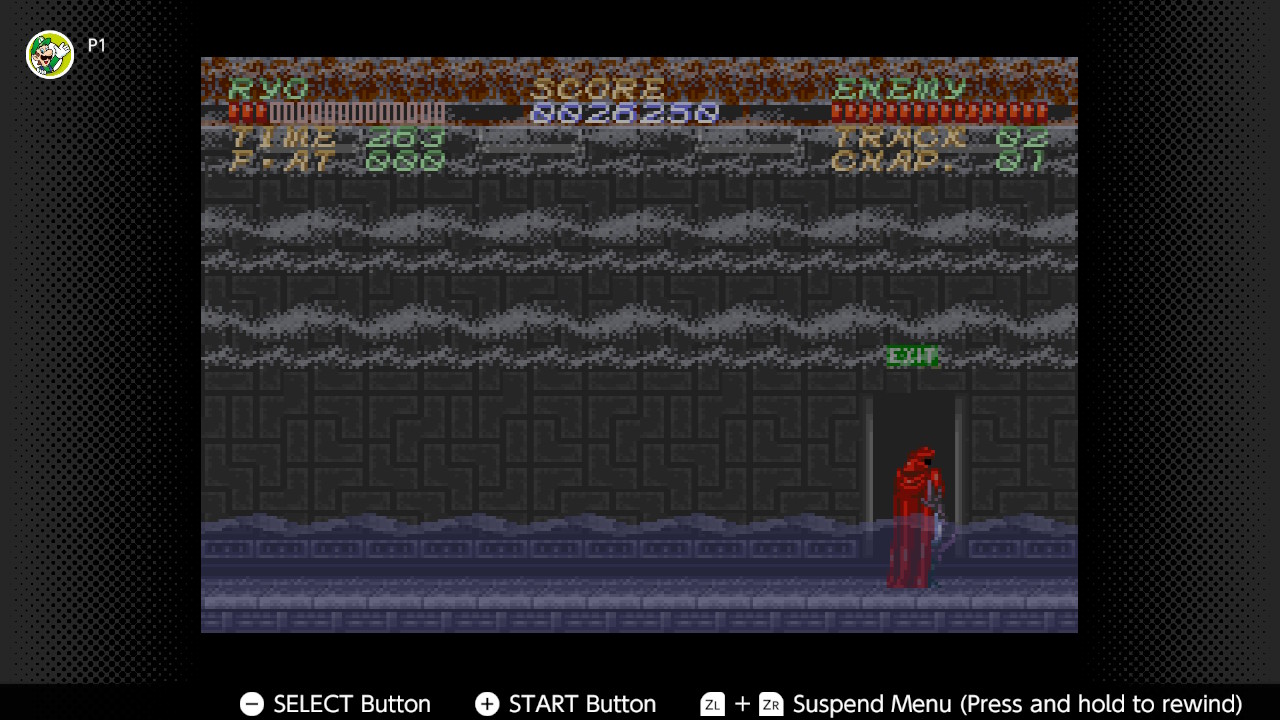
Psycho Dream has the absolute worst hit detection I've experienced in a game. There's only a teensy, visually-undistinguished pixel at the edge of your sword or whip during a certain frame of your attack animation that might hurt the enemy if it connects...or might just glitch through unrecognized. The game is extremely generous in allowing enemies to find a way to hit you, however.
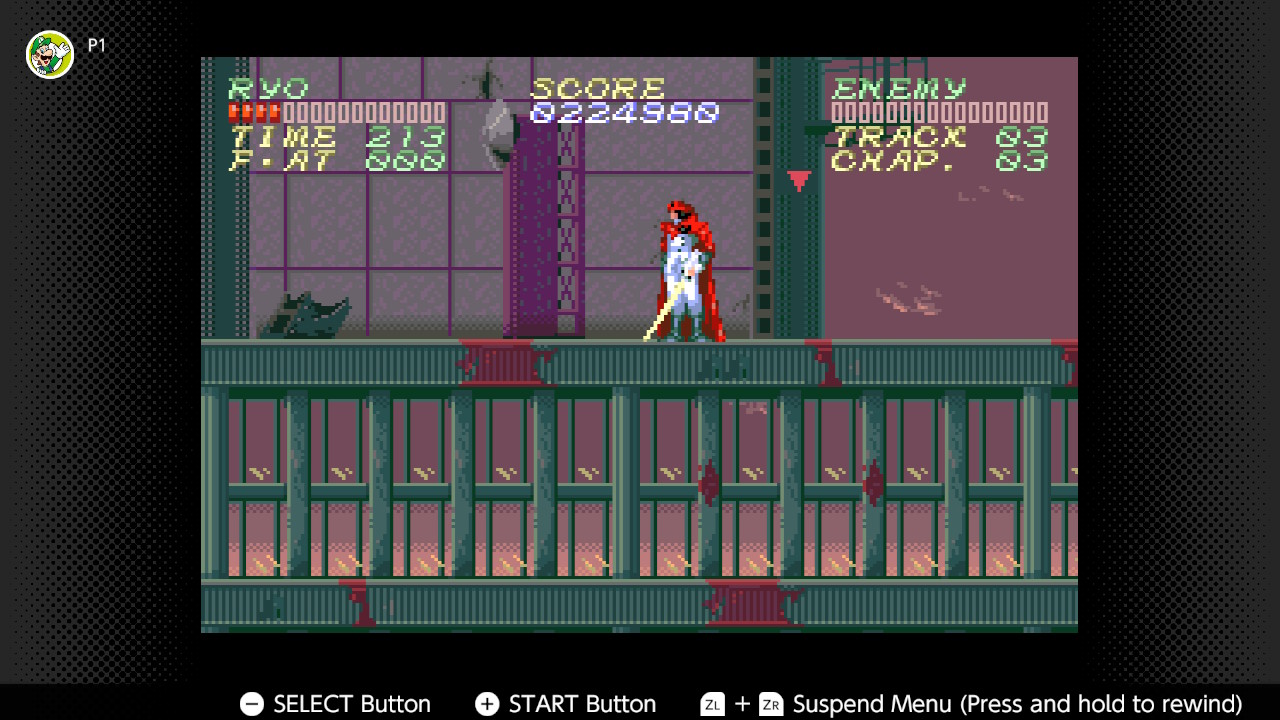
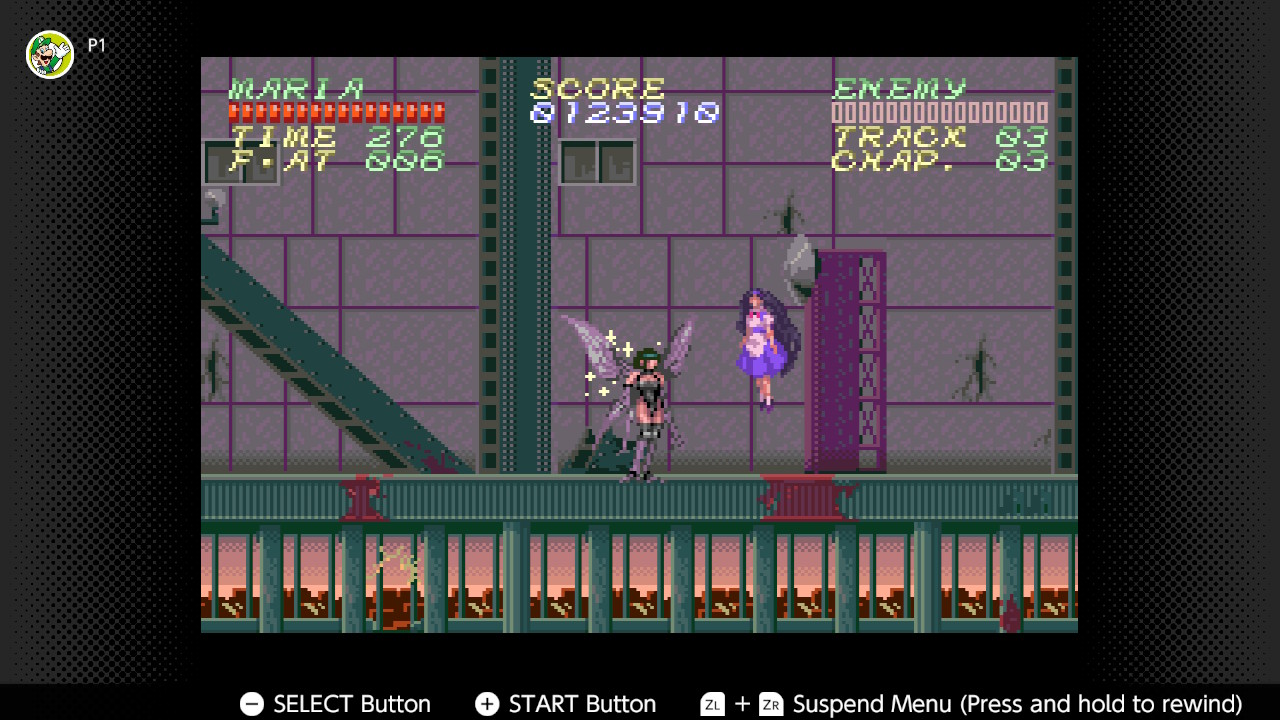
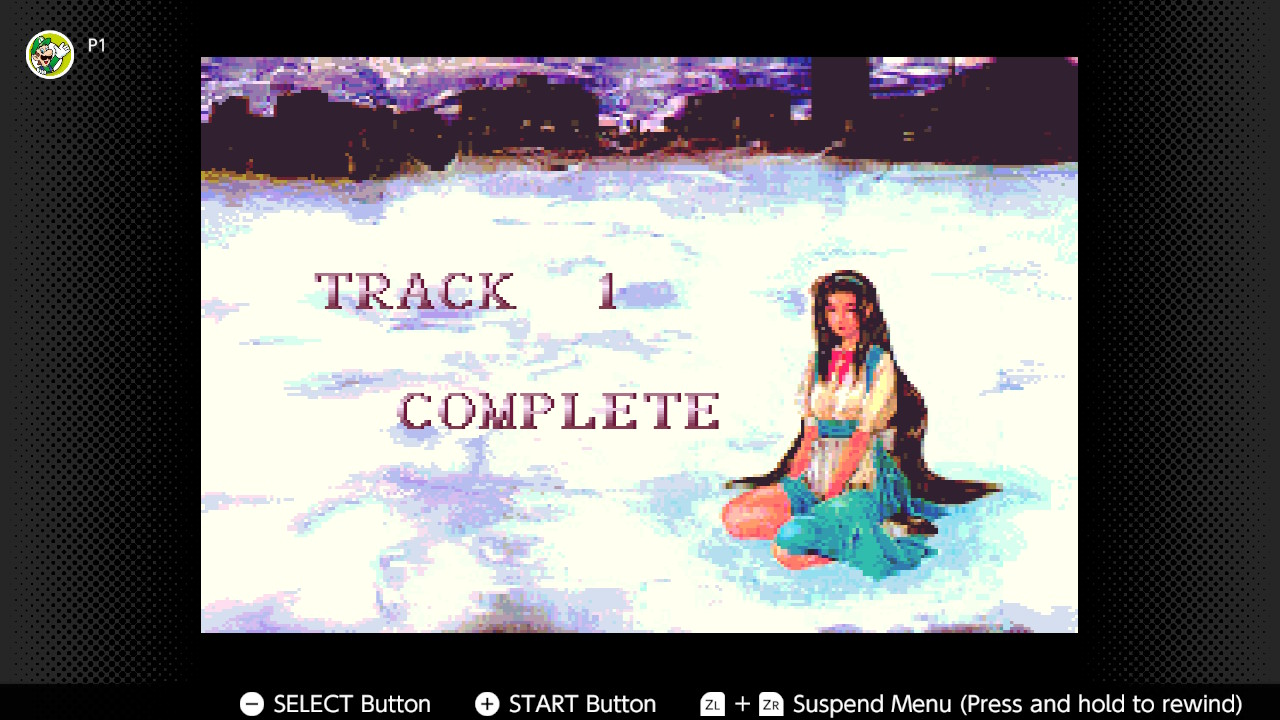
Despite this, you'll probably barrel through the six stages in this gallery of errors just due to the sheer unfinished lack of effort on display: cut 'n' paste substages of featureless flat platforms lined with the same enemies in the same configurations, providing no variety in challenge; enemy generators (that spawn enemies only very occasionally) that take 30 hits to kill for no reason; gaming's least-exciting elevator stage (which has like four OHKO enemies attack over the course of a minute and doesn't even offer any interesting scenery); successions of like 20 of the same barriers in a row that take the same four hits and require no variety in attack approach. So much is designed not to test your skill but waste your time.
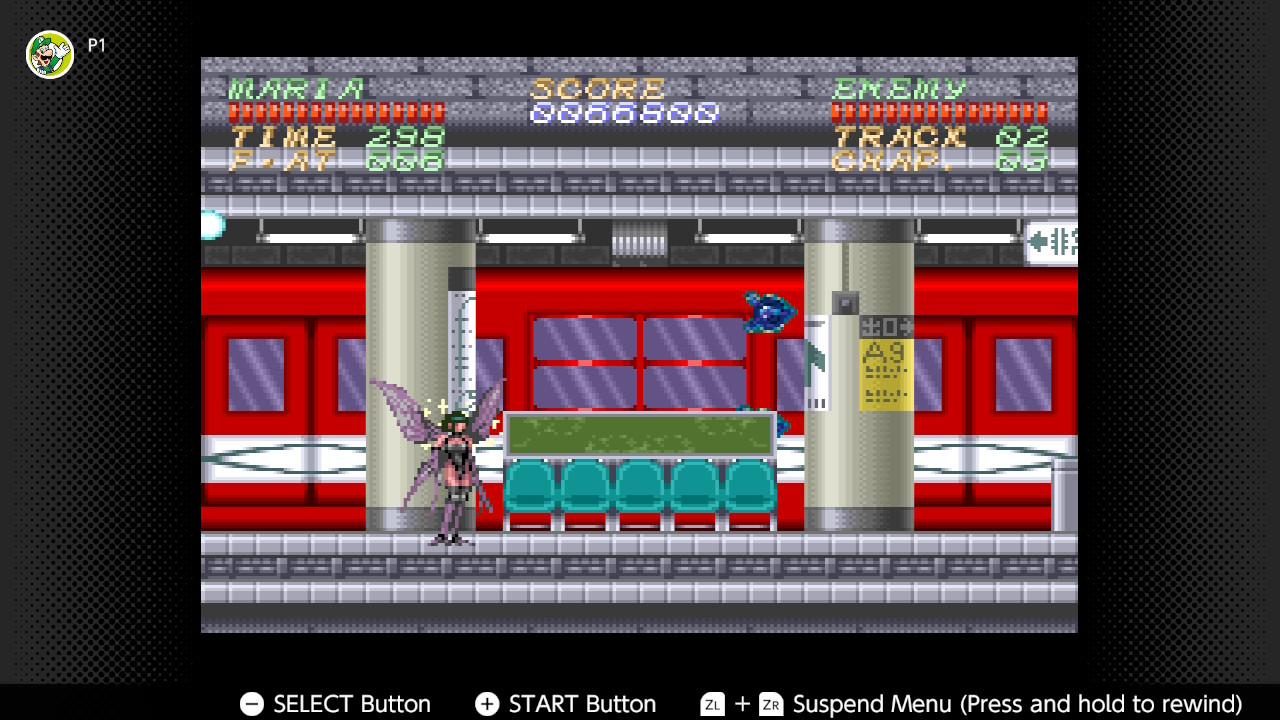
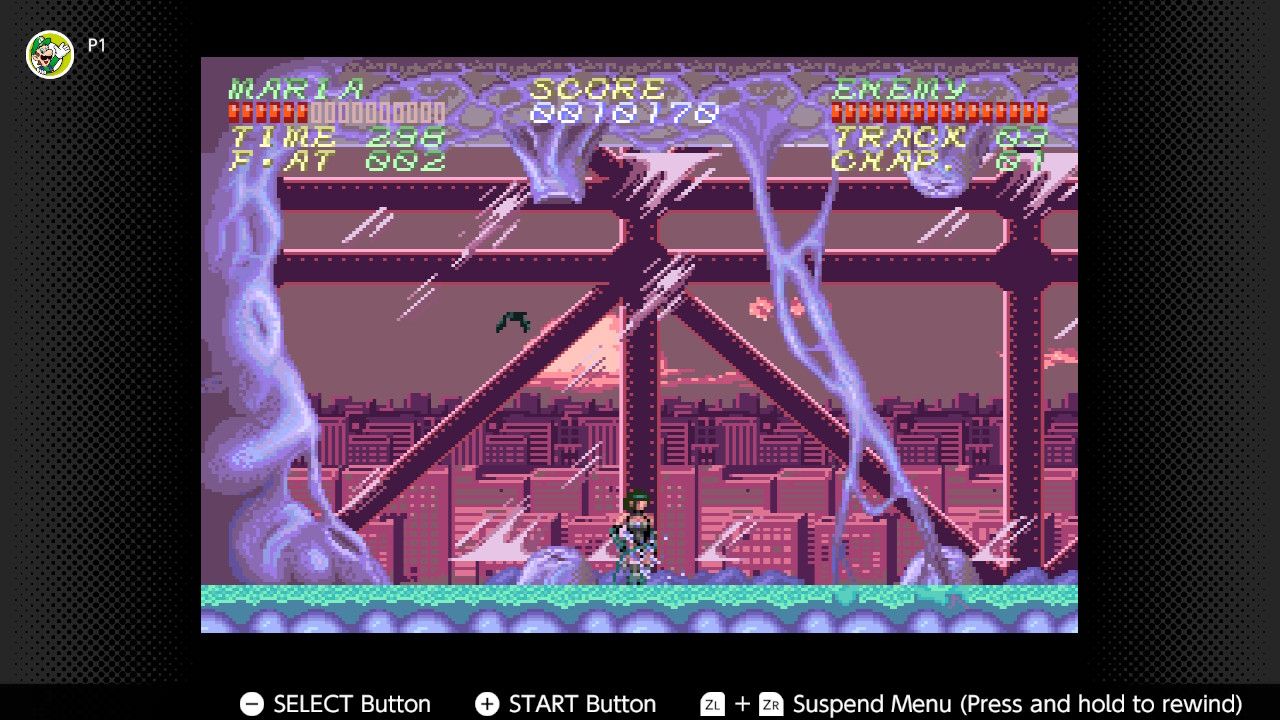
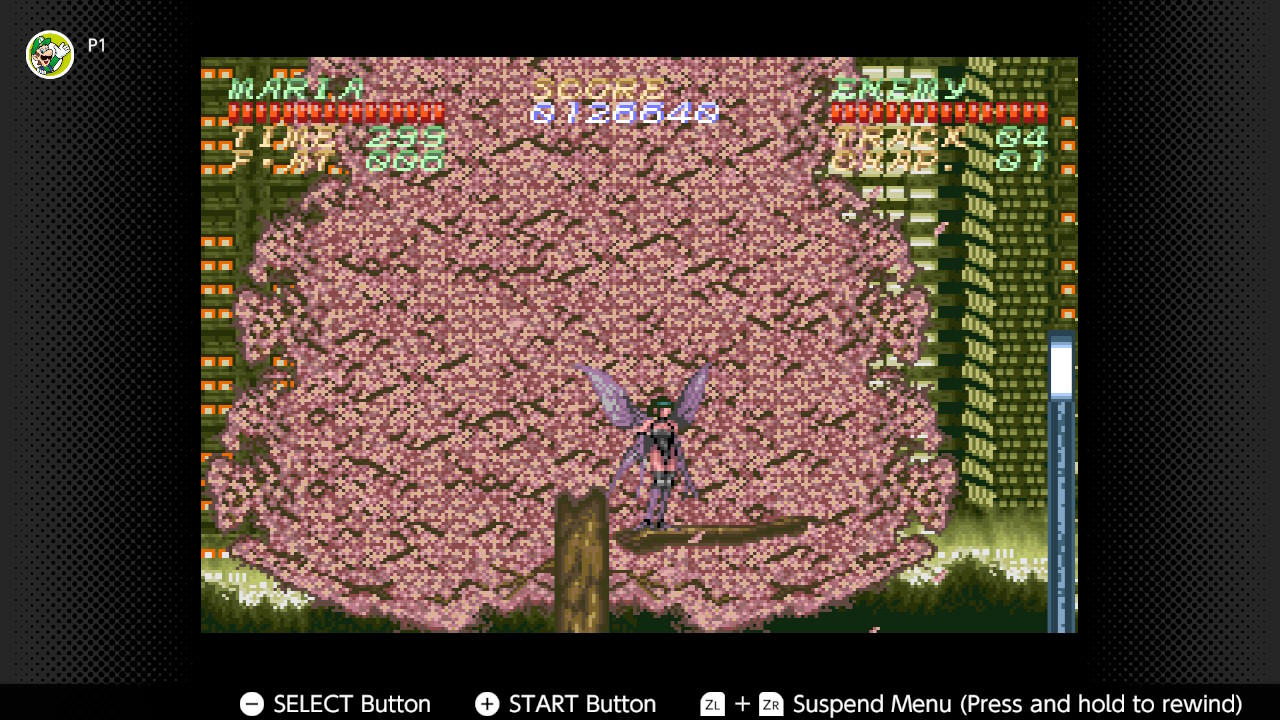
The deviations are annoyances: two-pixel grey moth (?) enemies nearly invisible in cherry-blossom storms; the nearly-unintelligible visual morass that is the last level's flashing red flame on flashing purple spiderwebs atop a flashing purple castle backdrop; a gun power-up that actually makes the game nearly unplayable, since its hurtbox and the enemies' hitboxes are so narrow that you'll never connect with anything. Then you'll reach the final boss, which seems near-unbeatable with the non-superpowered female character, as you need to hit directly upward to have a chance against the boss's super-mobile tentacle appendages (of course), which seem to have no discernible pattern, and as the game cheats by depriving you of your final power-up level on this stage only. I then reset and, for some reason (brain damage?) fought back to the end again with the male character, who could hit overhead, only to find that the hit detection isn't reliable enough to register your blows even with the right weapon. I finally managed to view an ending invested with as much care as every other element in this game, but: Don't bother with this; use the time you save to watch SNESdrunk videos.
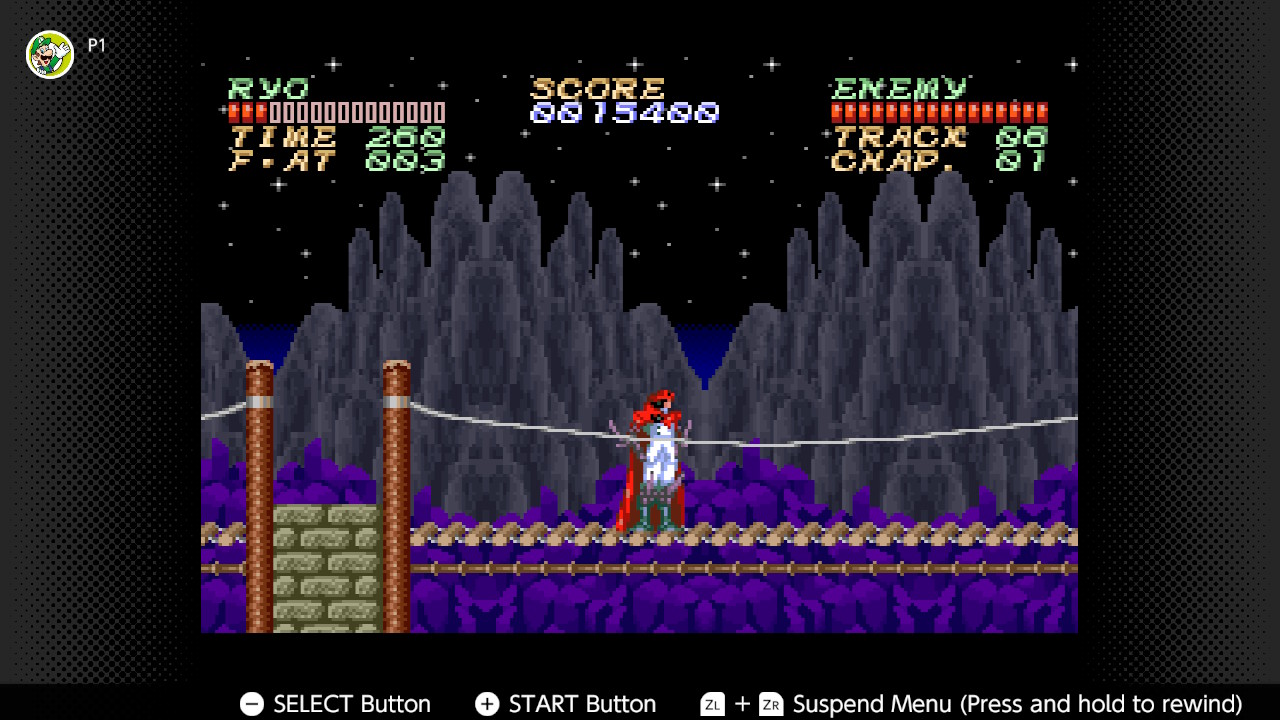
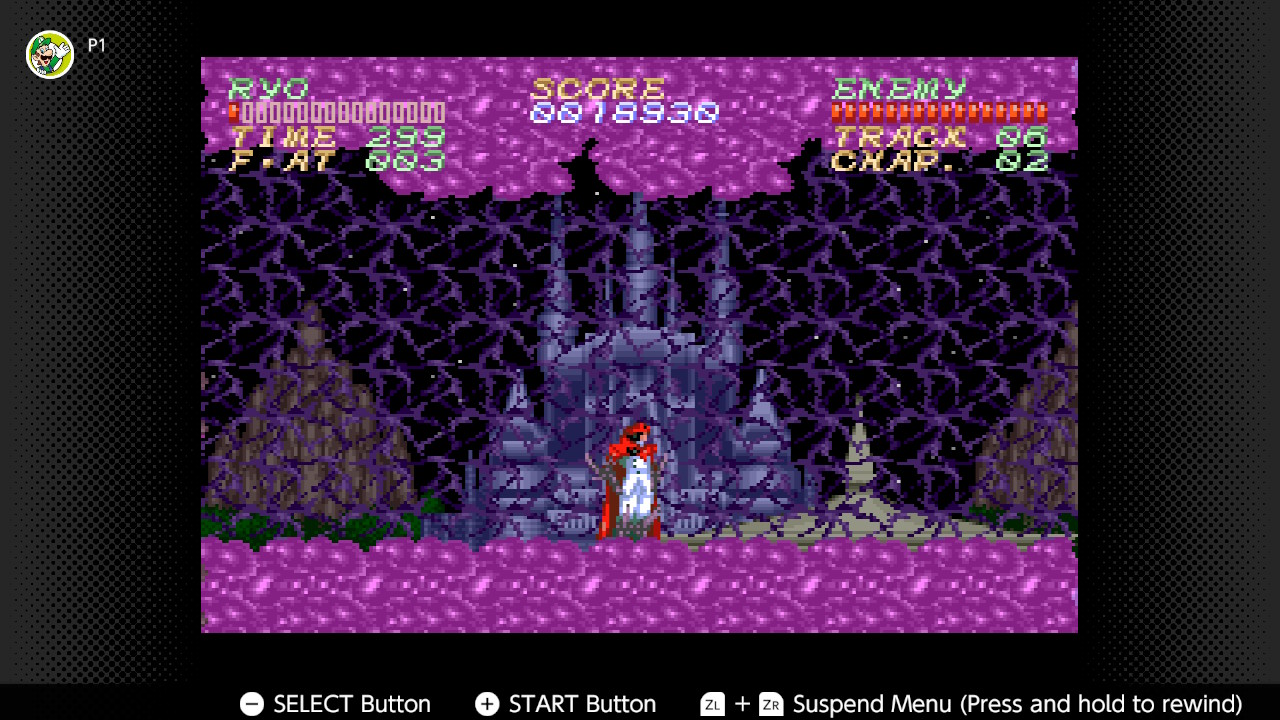

(In fact, I had trouble picking out screenshots for this game, as for all its bargain-bargain-basement Mystic Defender-clone aesthetics, its visuals are a combination of unintelligible (various gelatinous blobs) and pedestrian (subway, cherry-blossom storm, rock garden - the biggest spark of originality may be the inexplicable parade of giant snail lights at the end). For a game that takes place in a "dream world with no rules," it's remarkably unimaginative.)
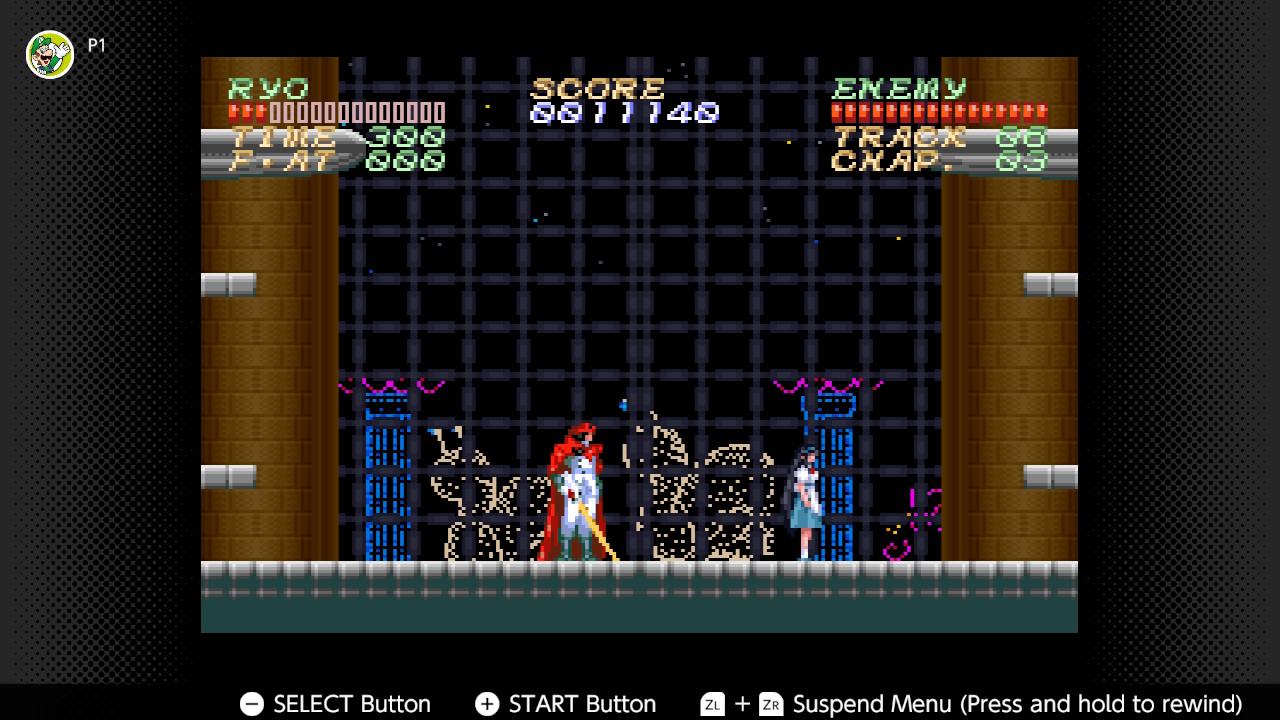

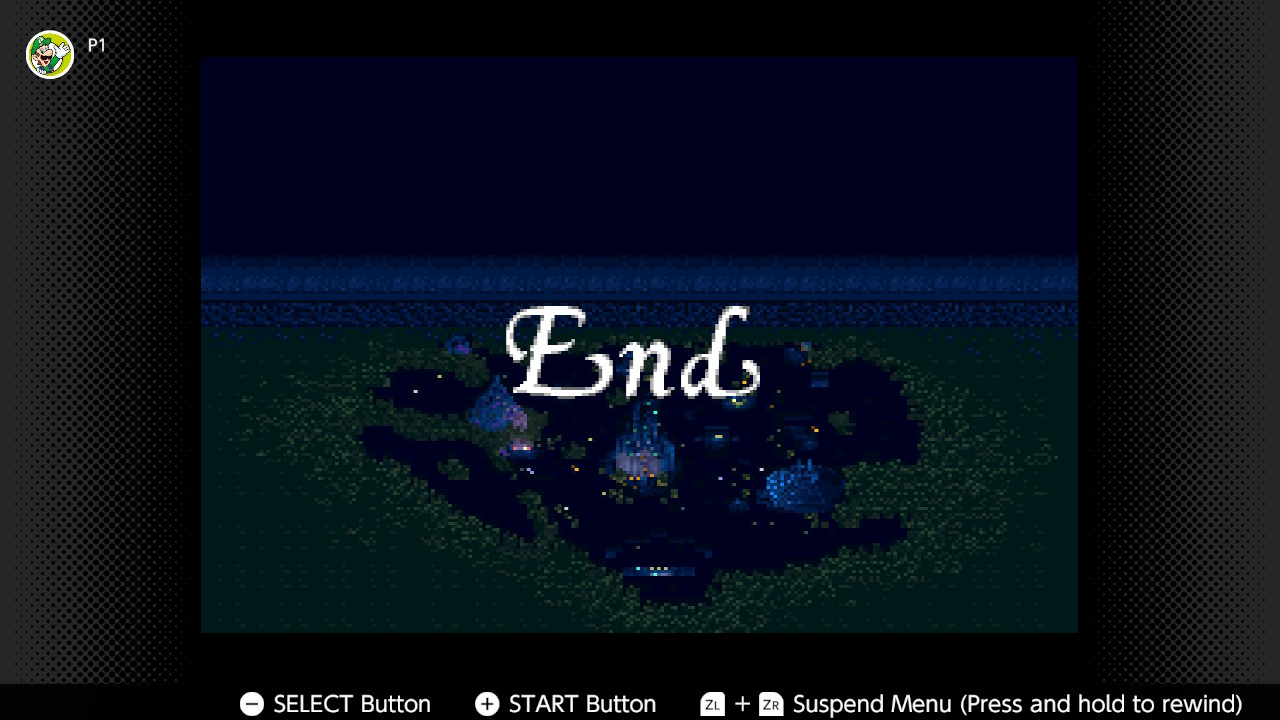
In a weird way, though, I'm glad this was included on the Switch streaming library. It's garbage, but this way, it's the type of garbage that no one has to spend money on to learn it's garbage; they can just pop in for 15 minutes free-of-charge with their Switch Online subscription until they learn it's garbage.
The most interesting thing about it is that it starts with the Japanese equivalent of an FBI VHS video warning.
1. The visuals! Puzzle platformer-come-action RPG Even the Ocean is most readily set apart by its visuals. It's from the folks who made Anodyne, a cross between Yume Nikki and Link's Awakening that explored, in an abstract way, its young hero's feelings about his difficulties in fitting in due to his Asian heritage and economic background. What drew me to Even the Ocean, besides its pedigree, was the pixel art. The natural environments in this game are gorgeous:
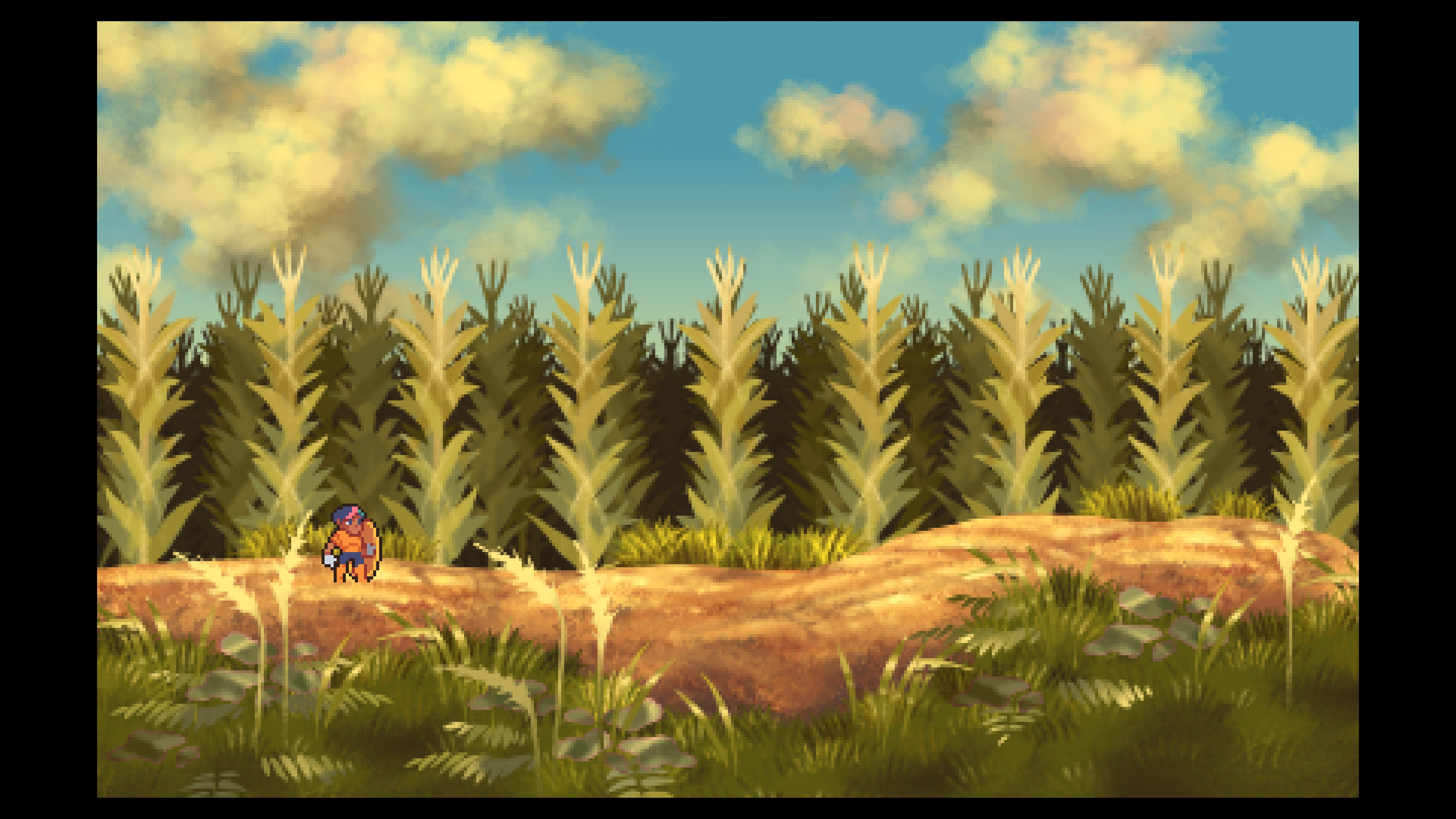
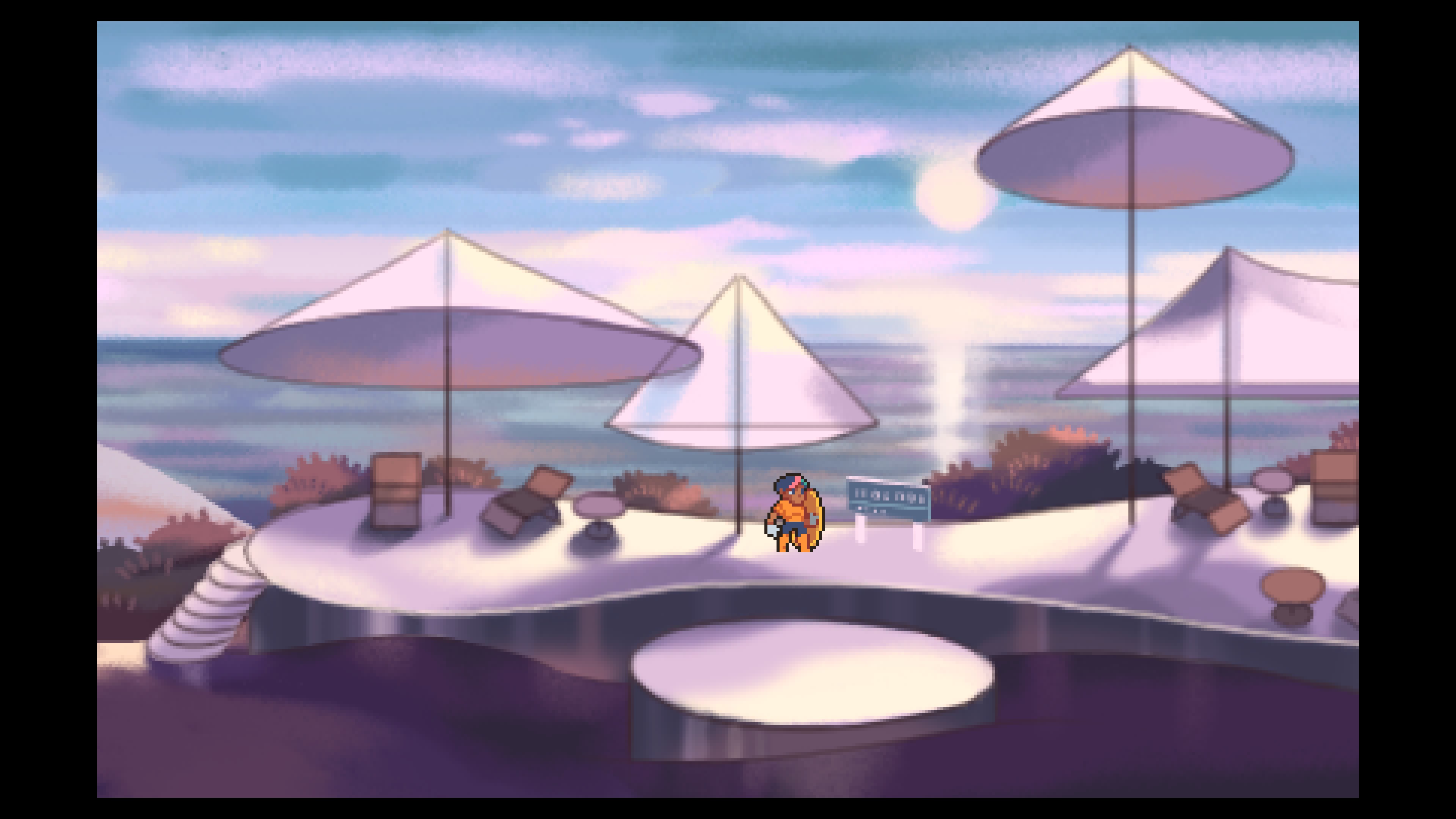
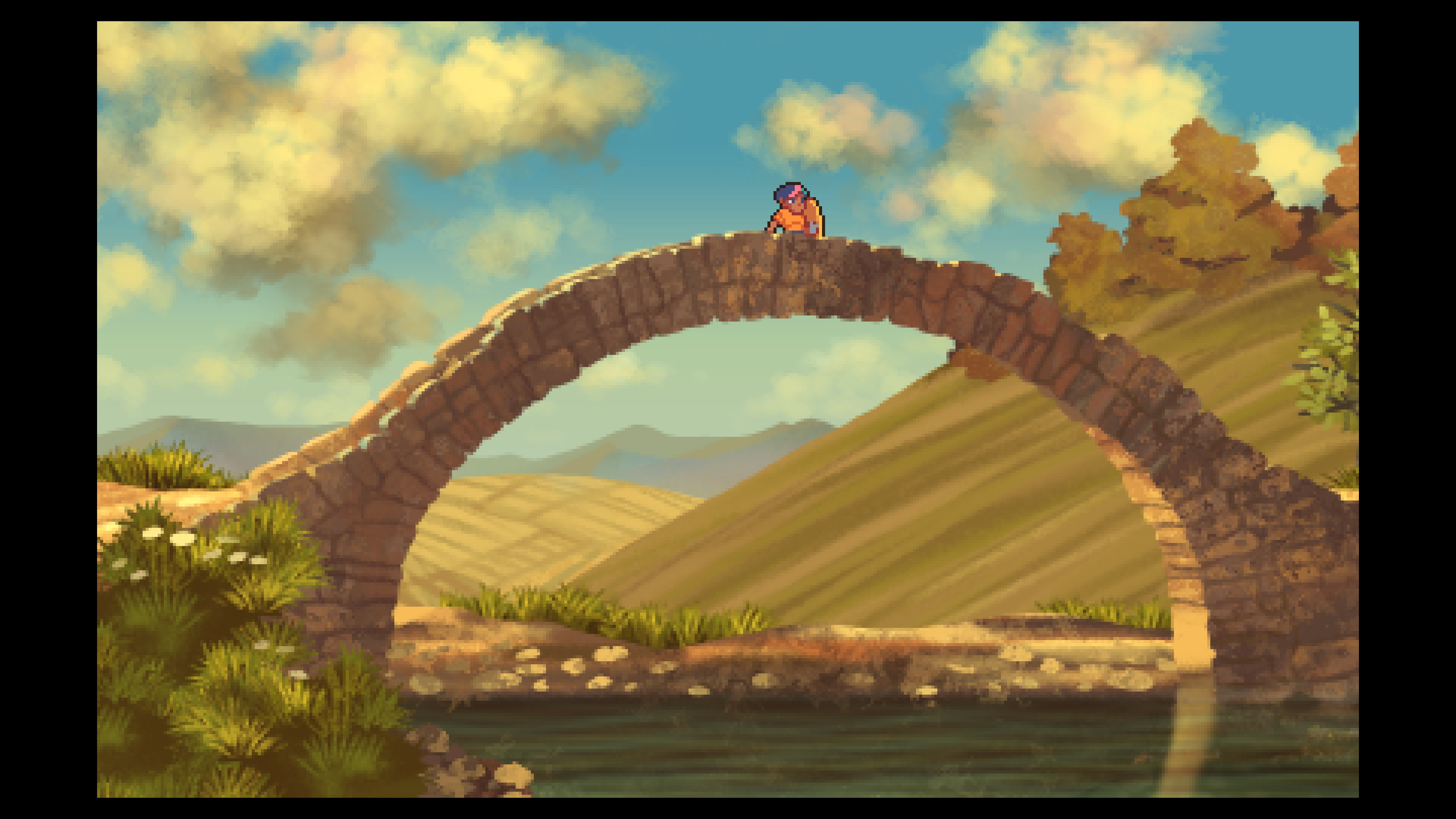
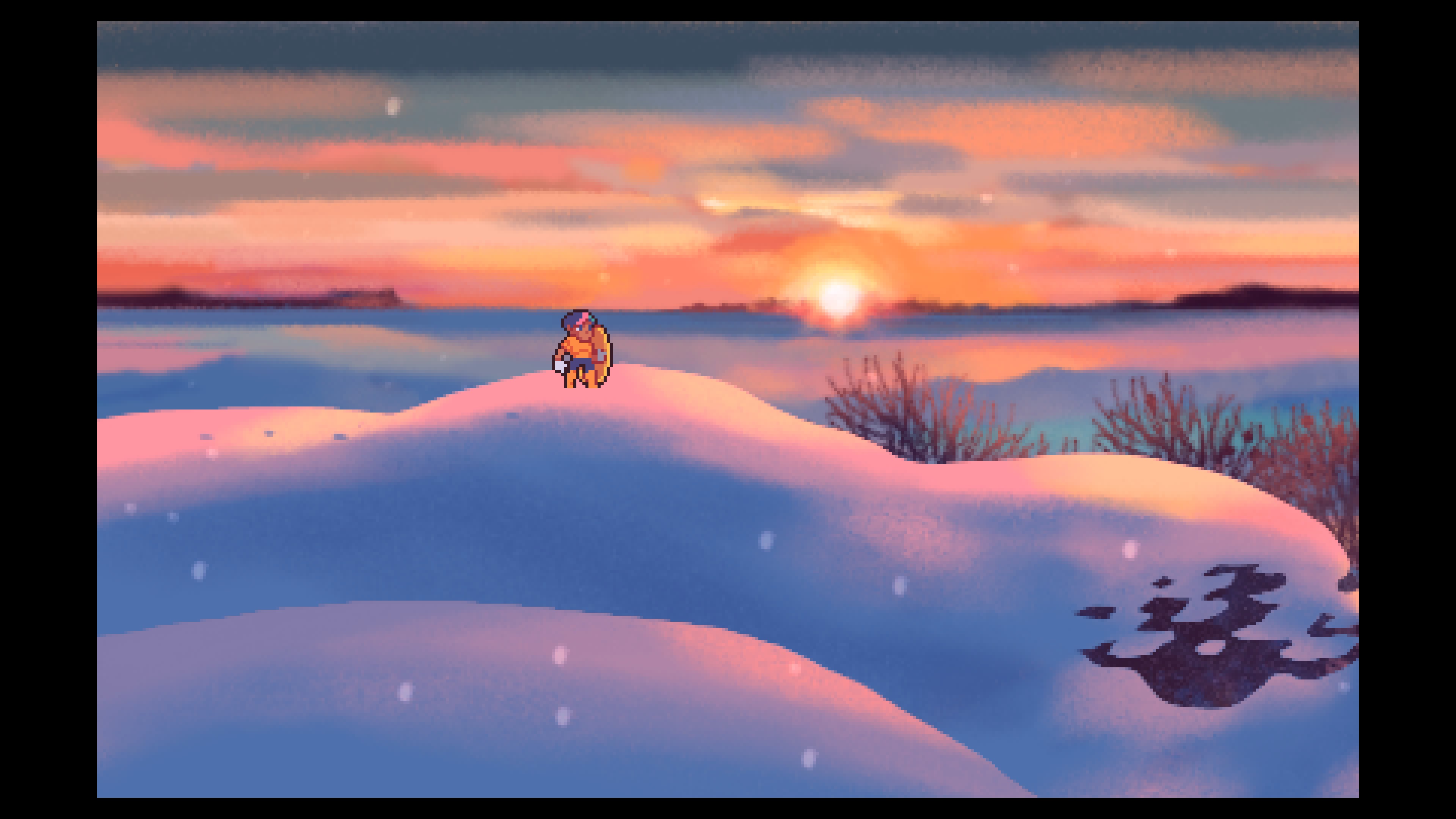
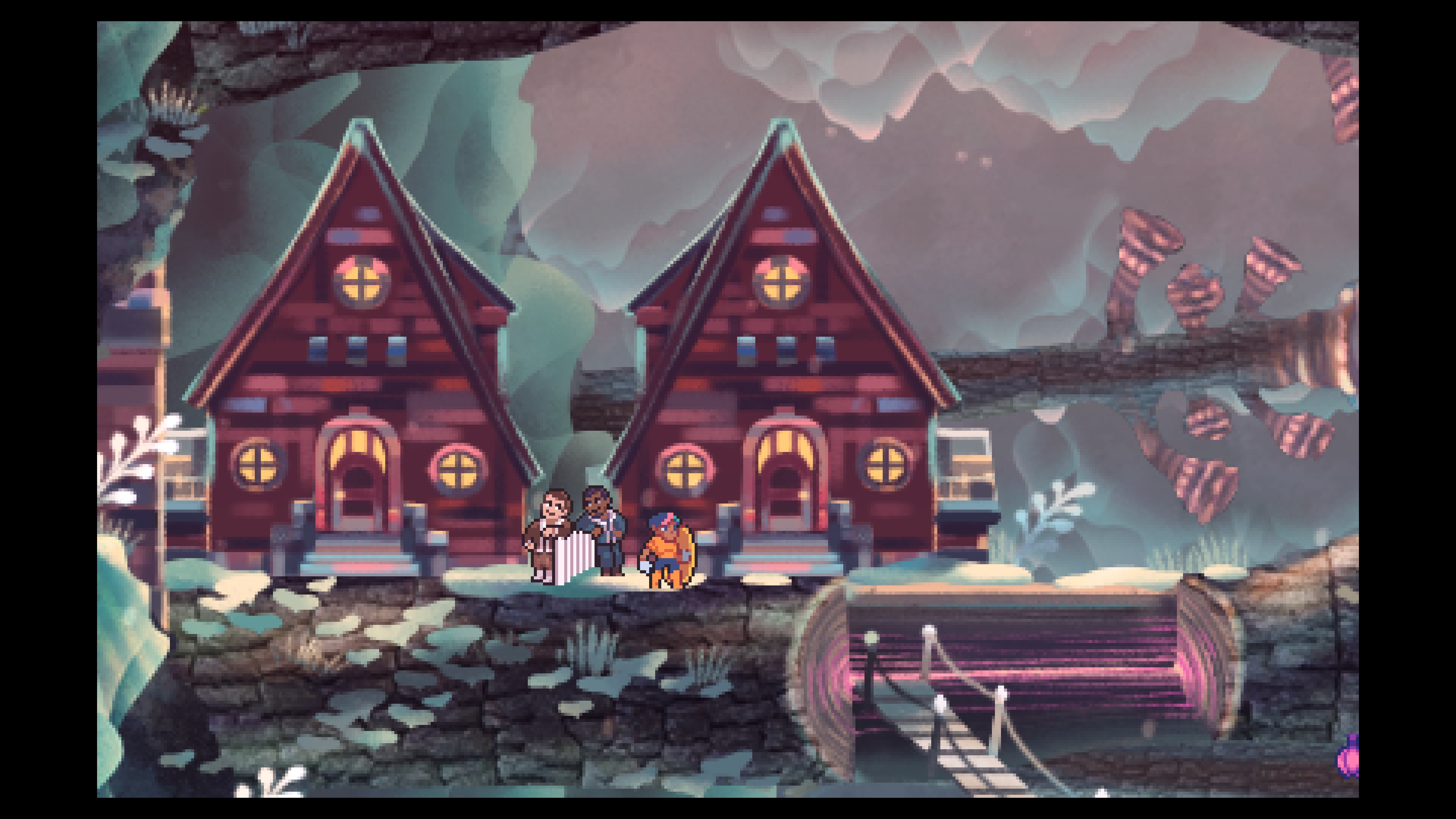

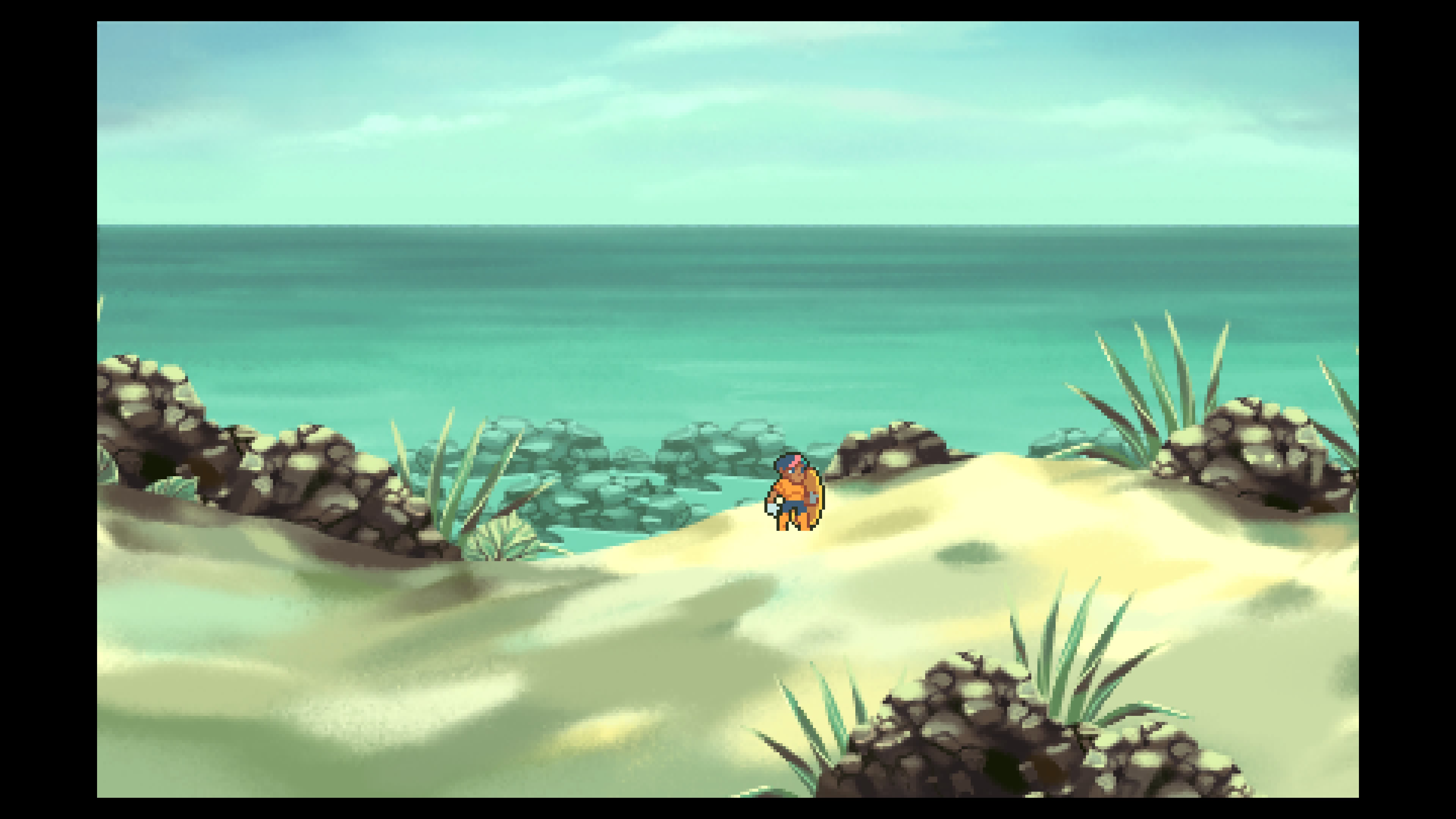
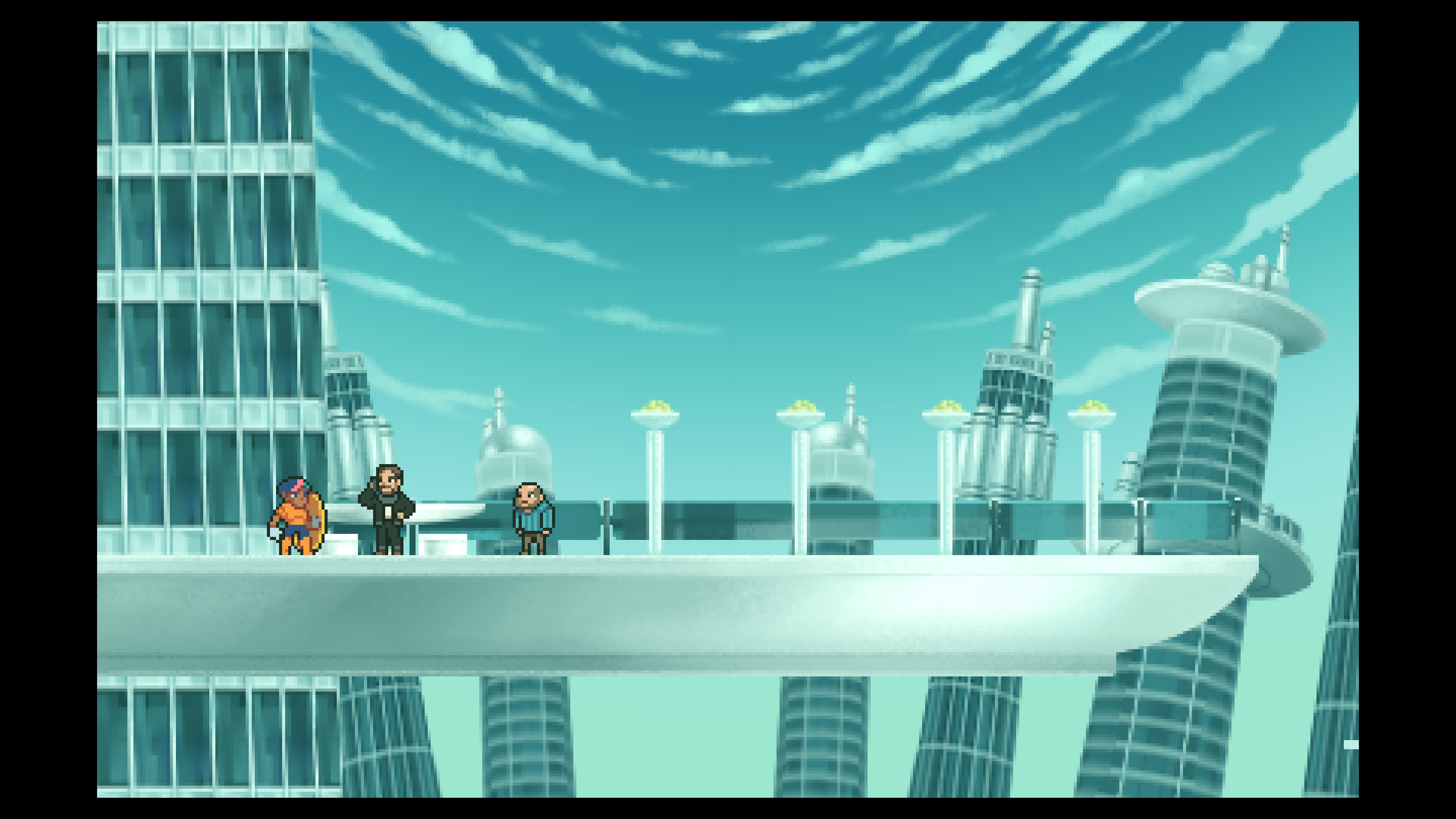
A special mention for Riverton, home of that bridge in the third pic, one of the most picturesque villages I've seen in a video game:
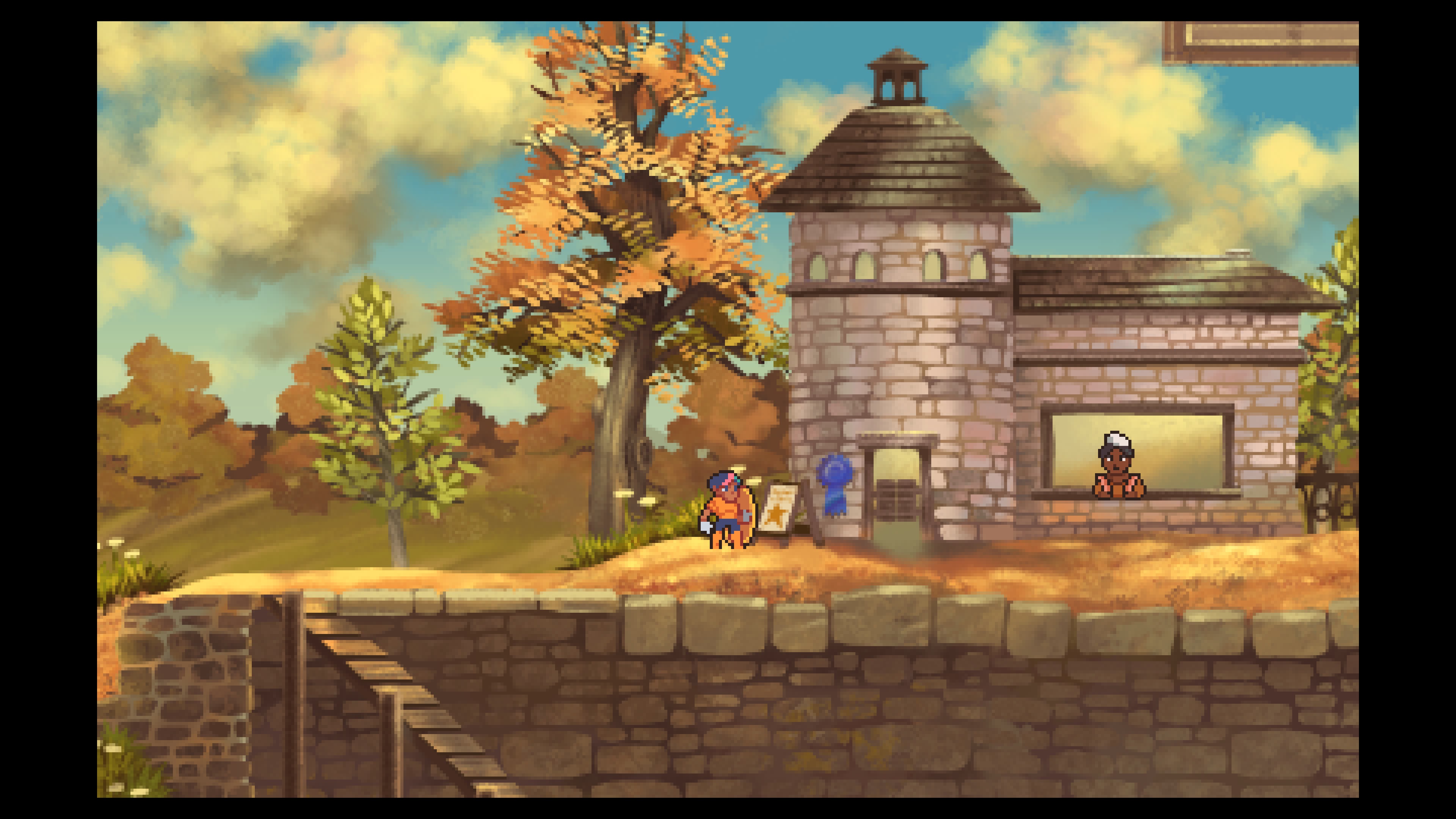
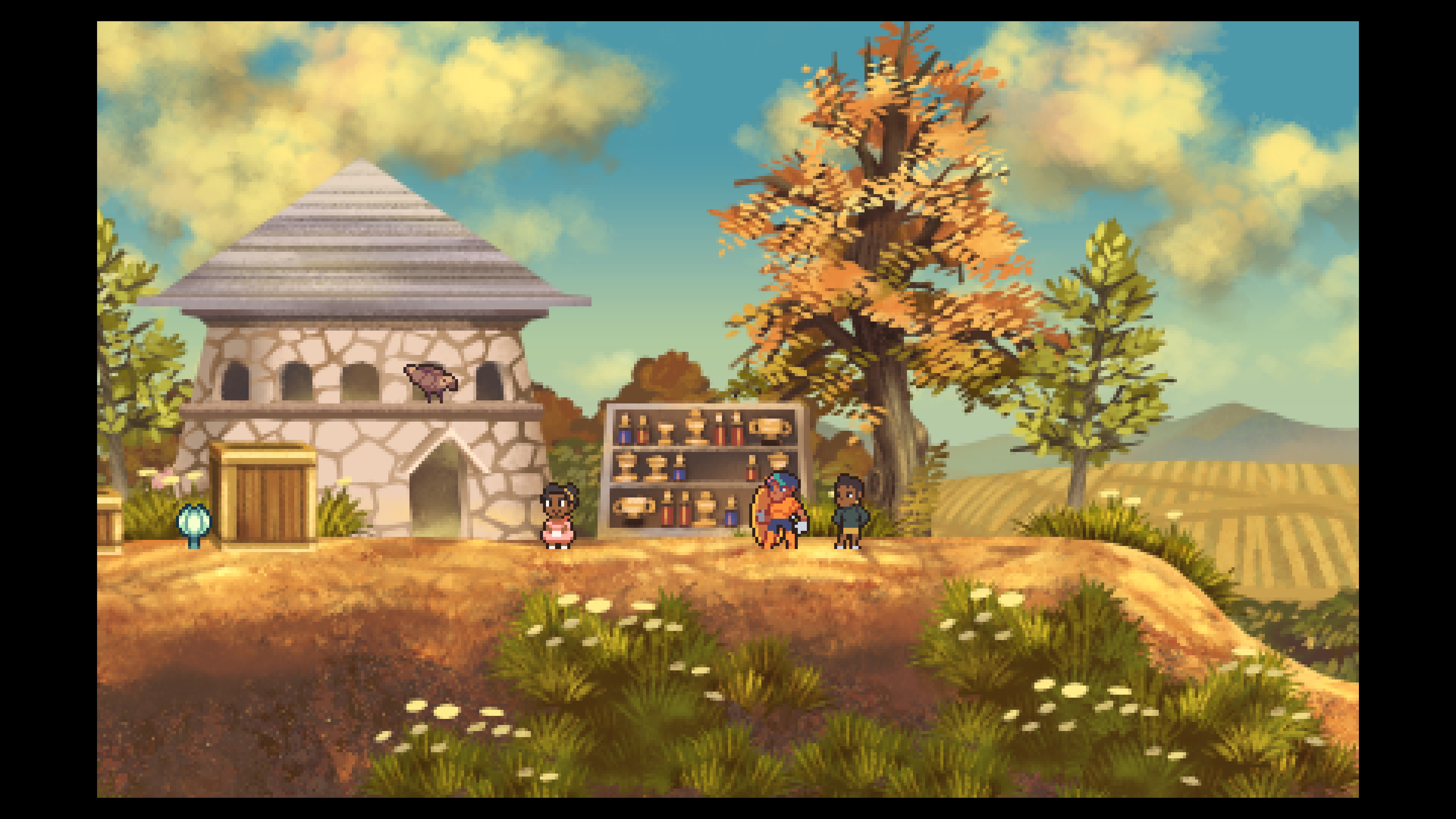
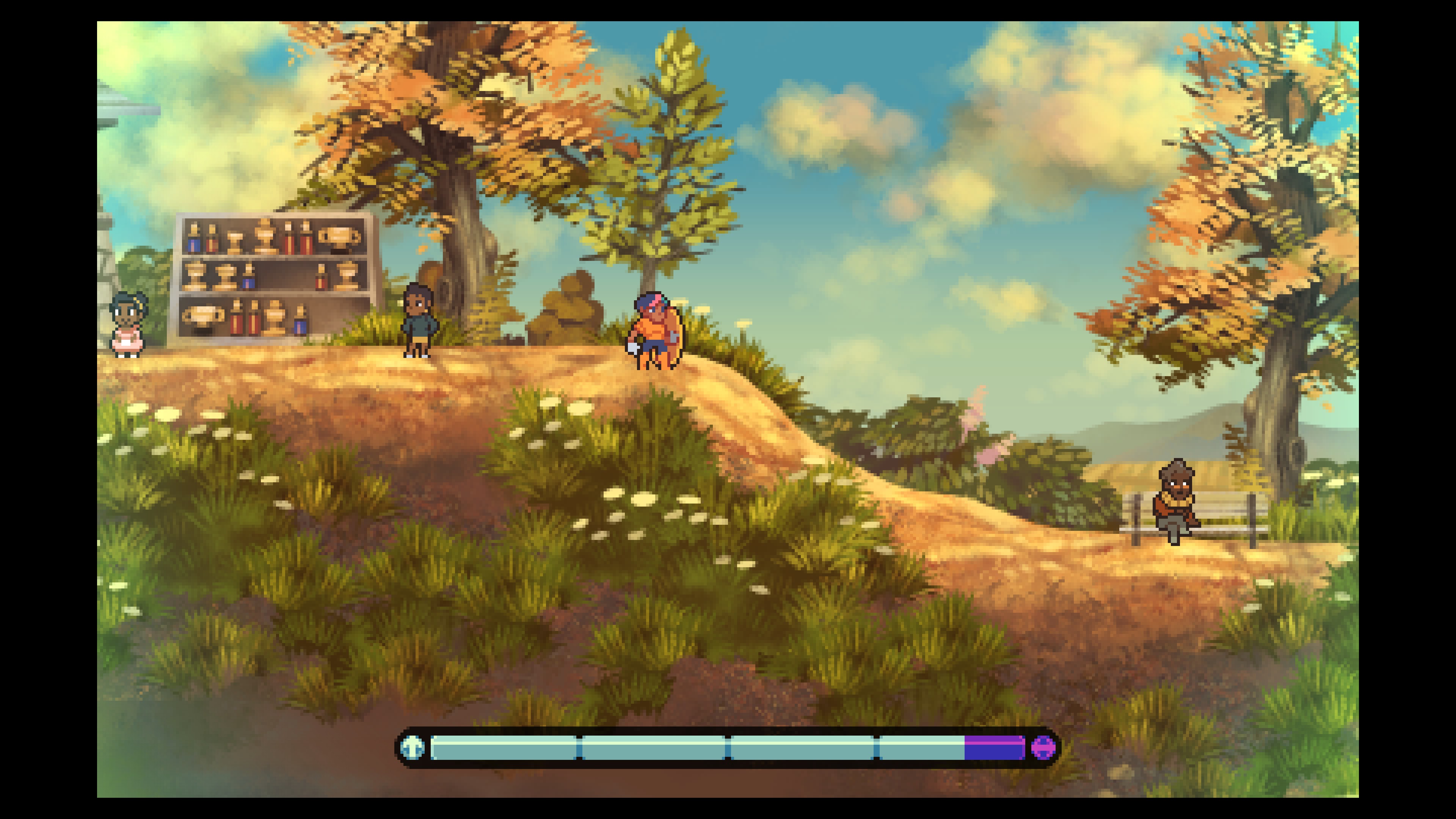

But there's another brand of visual distinction at work, and that's in the people populating the world. Name another game that has a heroine who looks like this:
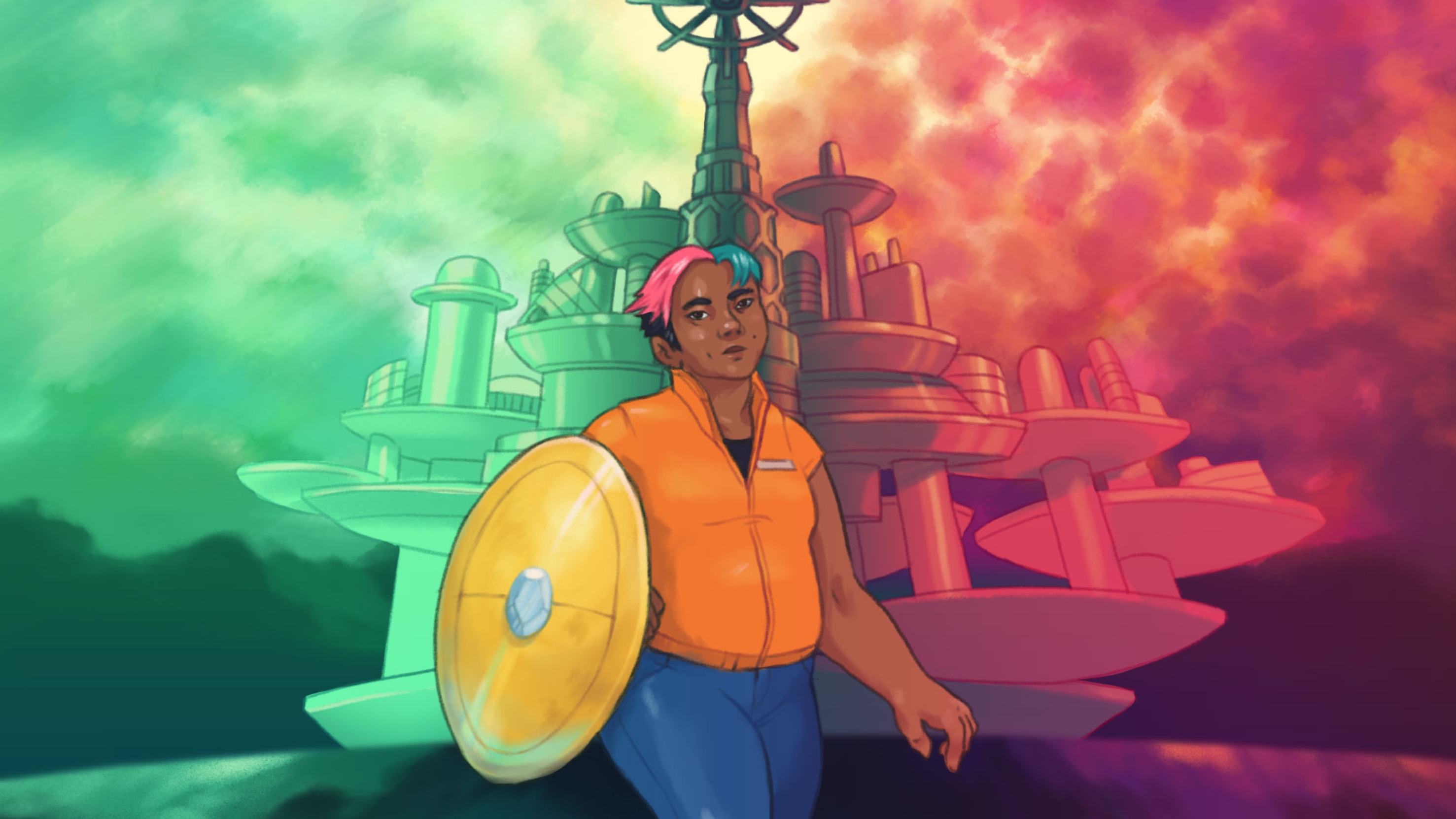
Then there are the NPCs:

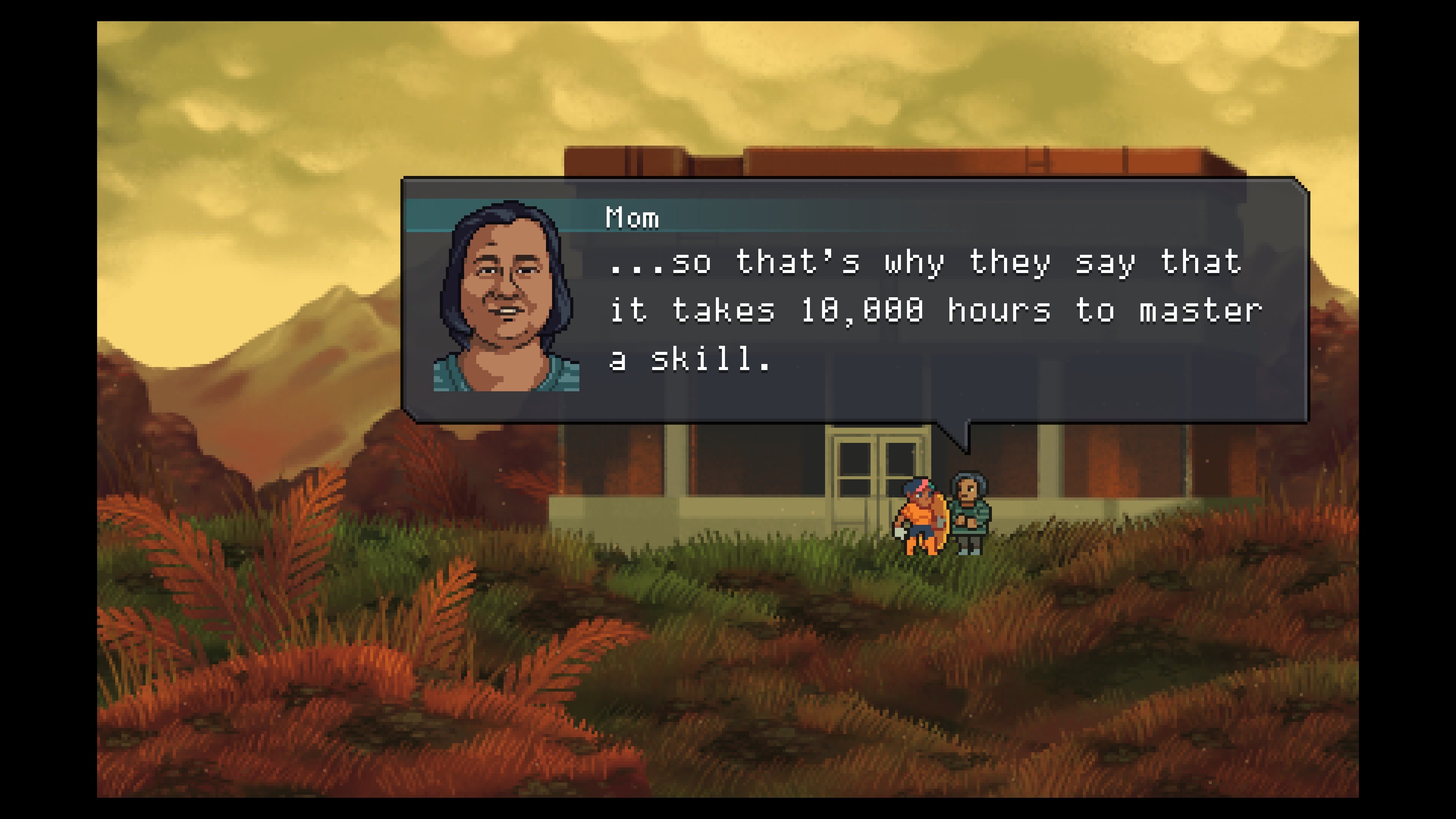


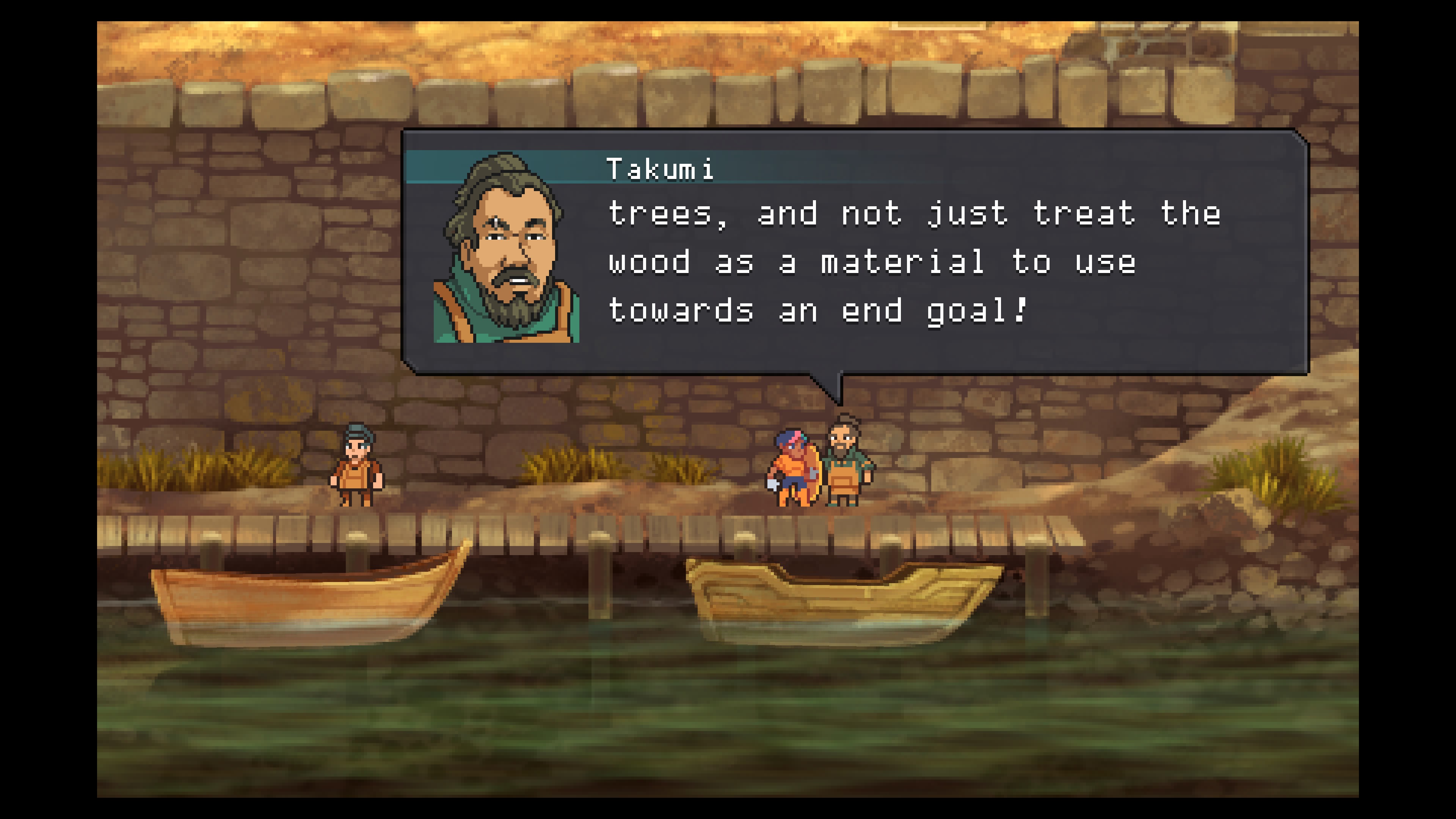


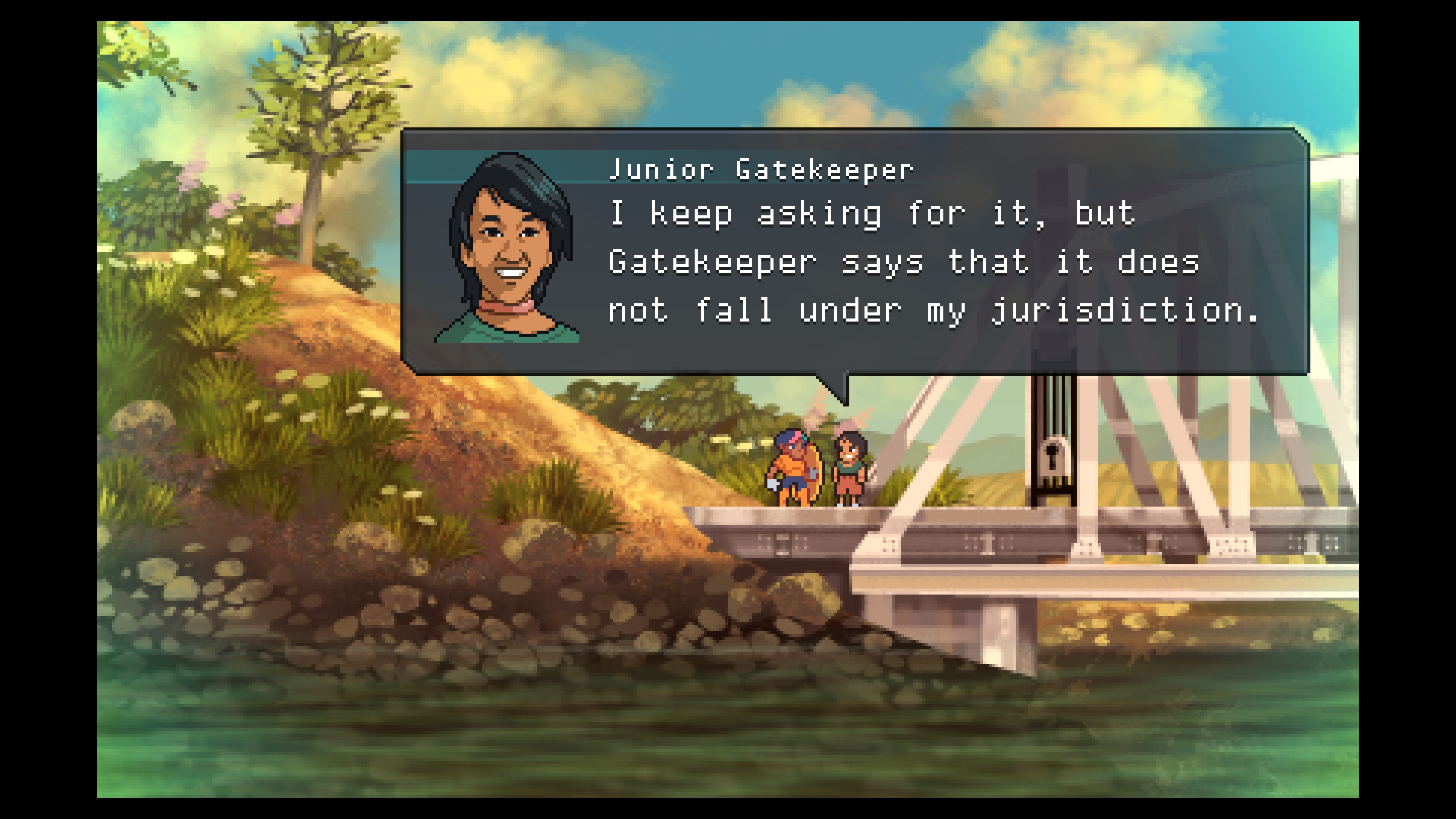

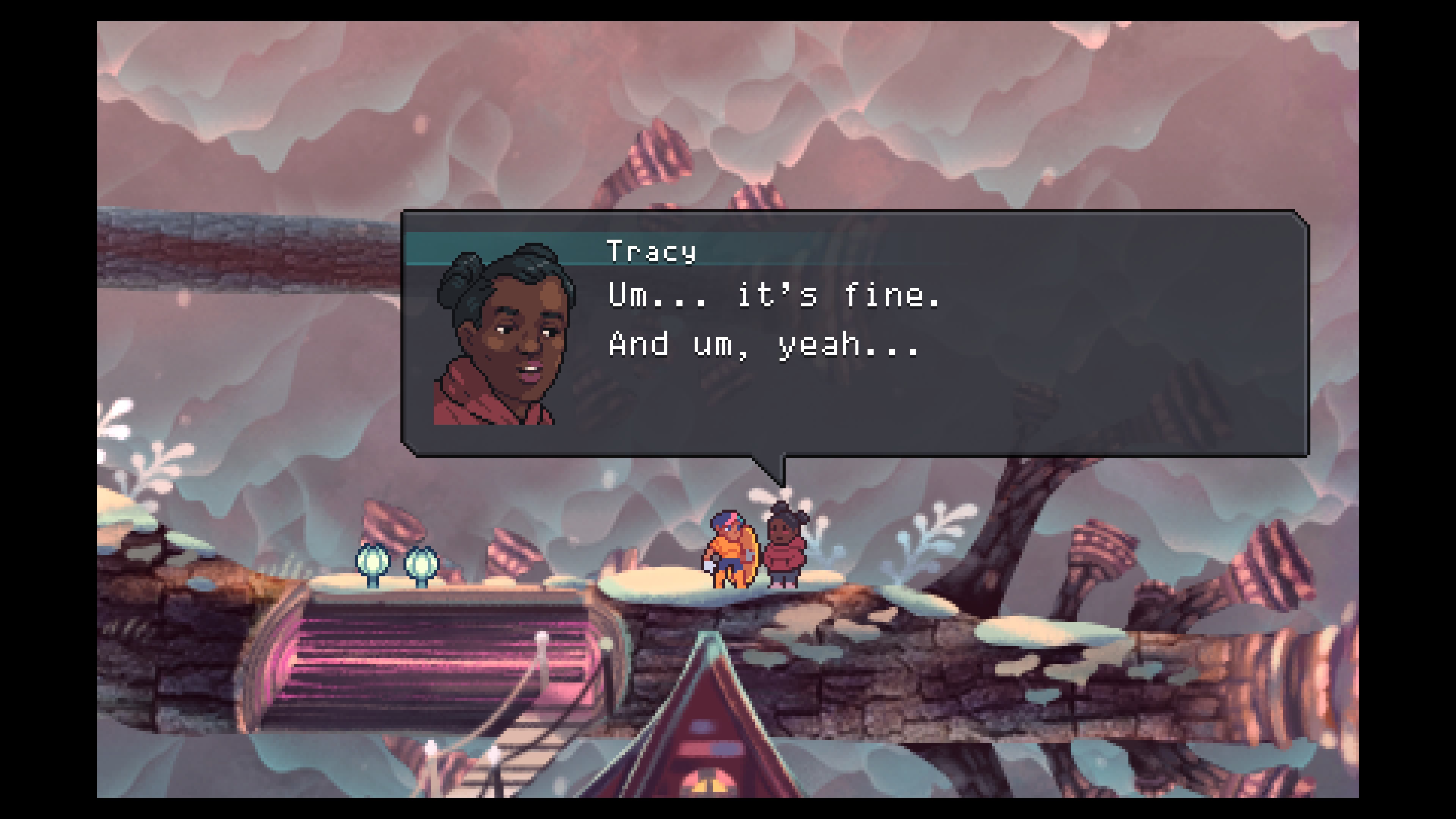




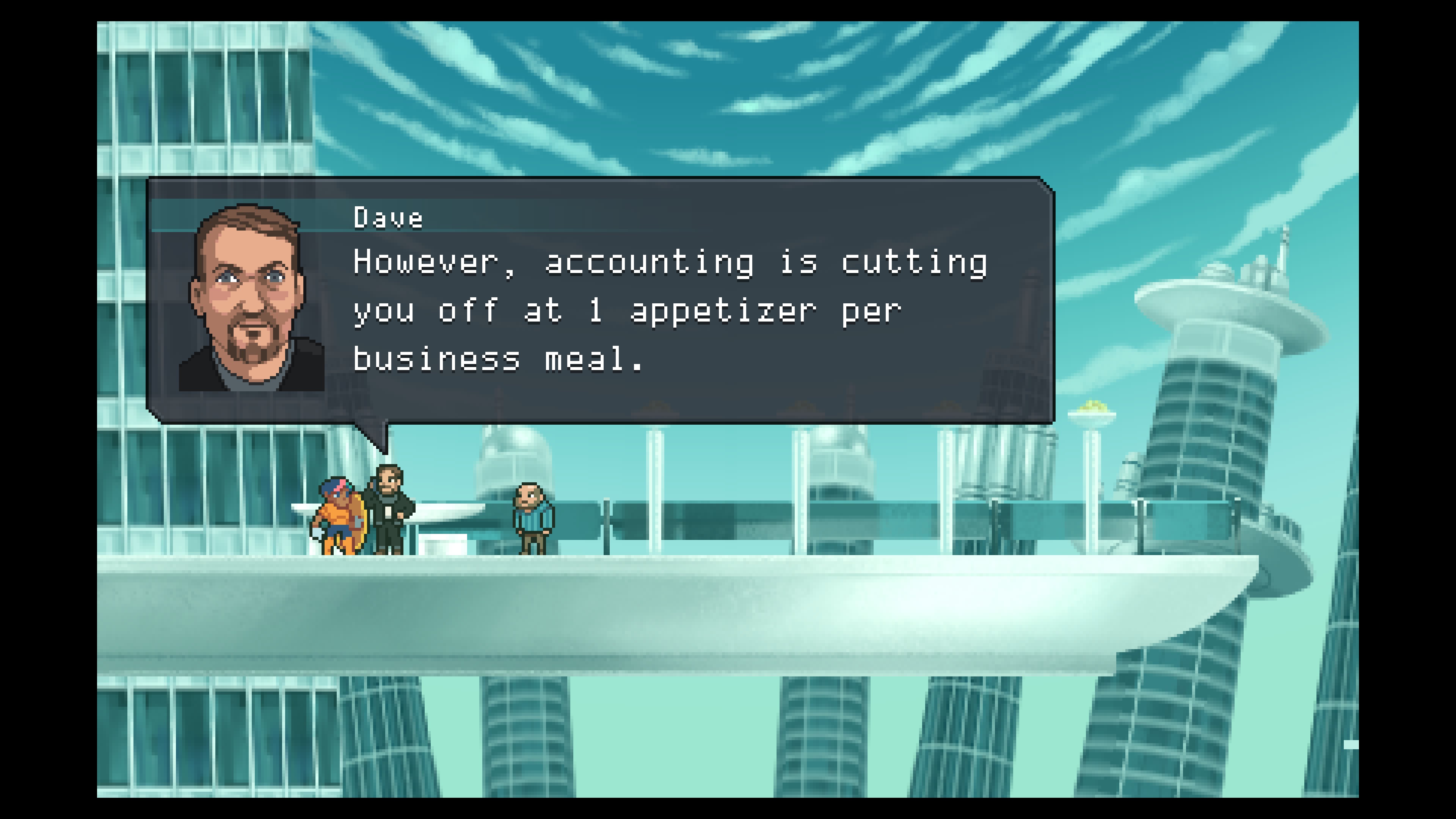
It's a much wider cross-section, in race, body type, and age, of unglamorized everyday people, and that's not something you see much in media in general, much less video games.
2. The gameplay! The gameplay, and game world itself, hinges on the interplay between the world's foundational powers of Light and Dark energy, characterized by green and purple glows, respectively, with Light associated with vertical movement and Dark with the horizontal. (You can think of them as more colorful analogs of yang and yin.) The main setting is Whiteforge City, which prides itself on harnessing Light Energy to create staggering technological advances and a soaring metropolis. Your refreshingly butch avatar is Aliph, a rookie power plant technician who's taken on her new career just when something seems to be going wrong with the plants.

You can probably guess where this is going from the synopsis, particularly when very obvious FF7 Weapon analogs start showing up, but Even the Ocean takes a unique approach to exploring the scenario, at least. First, there is no combat whatsoever. When apparent enemies do appear, Aliph and her fellow technicians note that they're not monster hunters and (in a pointed contrast to gaming convention, where nearly every job is inevitably boiled down to a combat-ready spec set) that their professions in no way equip them for fighting.
Your charge instead is just to make your way through to the repair sites. Colliding with various obstacles within the awry plants will imbue you with increased Light or Dark energy. Too much of either is fatal to Aliph. High levels of either, however, do have benefits: a great deal of Light Energy allows Aliph to jump higher, whereas a higher dose of Dark Energy allows Aliph to move more quickly and jump longer distances. Your job, then, is to juggle what is effectively a health continuum (as opposed to a health bar) to avoid obstacles and get where you have to go, leveraging the risk of traveling in a precarious state of health against the mobility boosts you need to reach your goal.
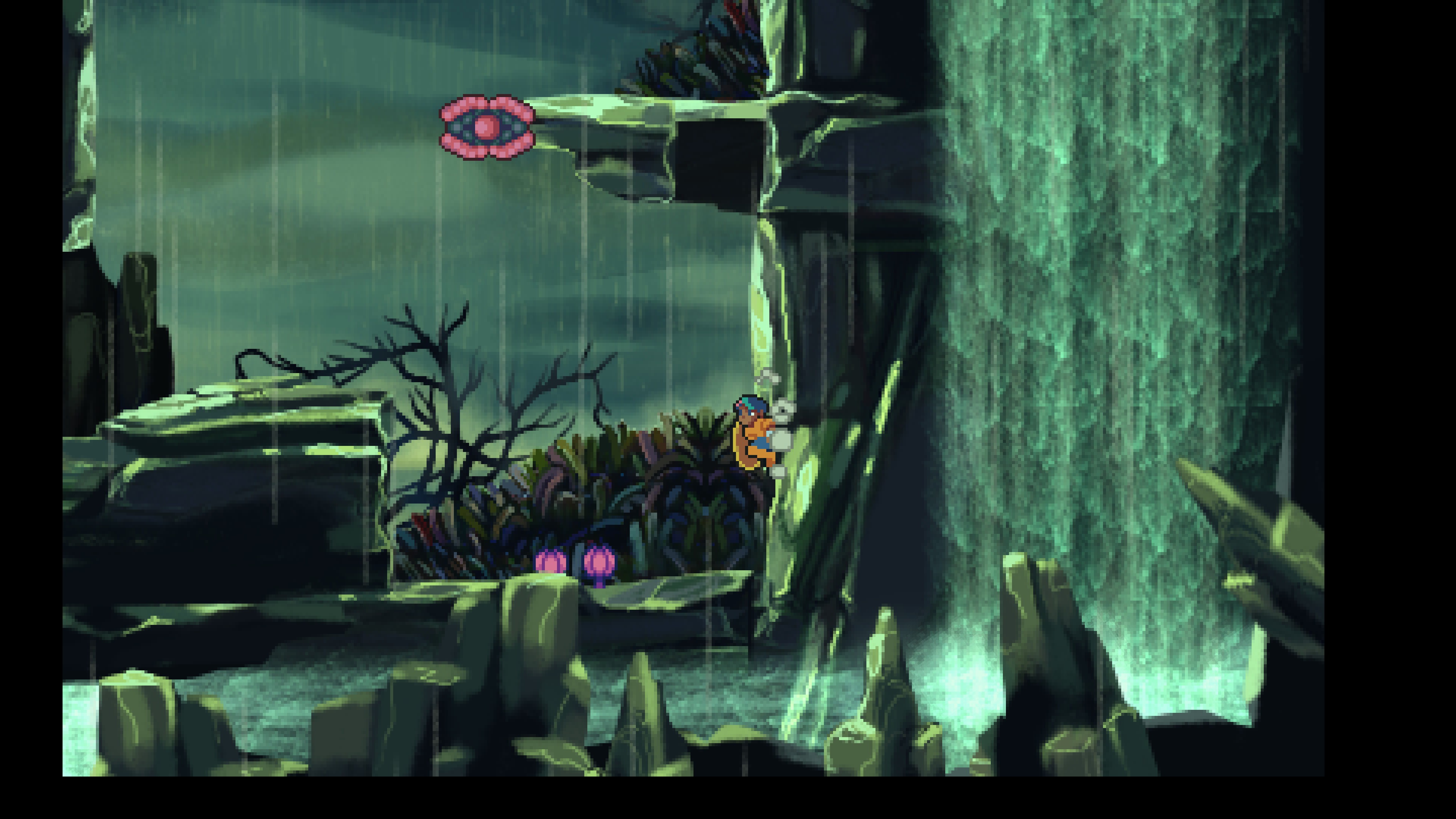
It's a puzzle platformer, and in addition to the Light/Dark jump/speed buffs, you'll continually explore other new abilities: the shield Aliph salvages from the exosuit that's busted in her opening mission, for example, can be used to deflect energy (for protection or strategic deflection), to sail along on gusts of wind, to grind on rails, or to skip over water or energy beams. Each area seems to introduce a new wrinkle, a new method of movement, and they're all interesting and fun (though this does lead to a few sticking points later on where you're expected to recall how certain mechanics work that you haven't encountered in a few hours). The sheer variety in your moveset combines with the brevity of individual screens - puzzles are thoughtful but well-paced and saves ample - and the focus on the motion of the obstacles to give the game a welcome zippiness, a sense of forward movement, that makes Even the Ocean feel very dynamic, particularly for a puzzle-centric outing. It's to EtO's great credit that even though the title is completely devoid of combat, I never felt starved for action. That's a feat.
It's well-thought-out and fun, and there's one accomplishment worthy of particular note: the controls are great. Controls are typically highlighted when they're bad. I hate wall jumping. It will get me to turn off a game faster than any. I loved the wall jumping in Even the Ocean. It is the wall jumping ideal. It's what it should feel like. The devs were obviously in this project to tell a certain story (more in a moment), but there are difficult gameplay design challenges here that they absolutely nailed. It's a joy to move in this game. It's the gameplay of Super Meat Boy except not made for idiot masochists.
3. The....ENDING. Yes, this is one of those games that has...An Ending, the type where discussion of the title isn't complete without an in-depth, spoiler-filled discussion of the denouement, since it colors your whole experience. It's groundbreaking and offers a perspective not seen in games, but I wonder if it doesn't betray some of what's made Even the Ocean special before that. Endgame spoilers and discussion under the cut.
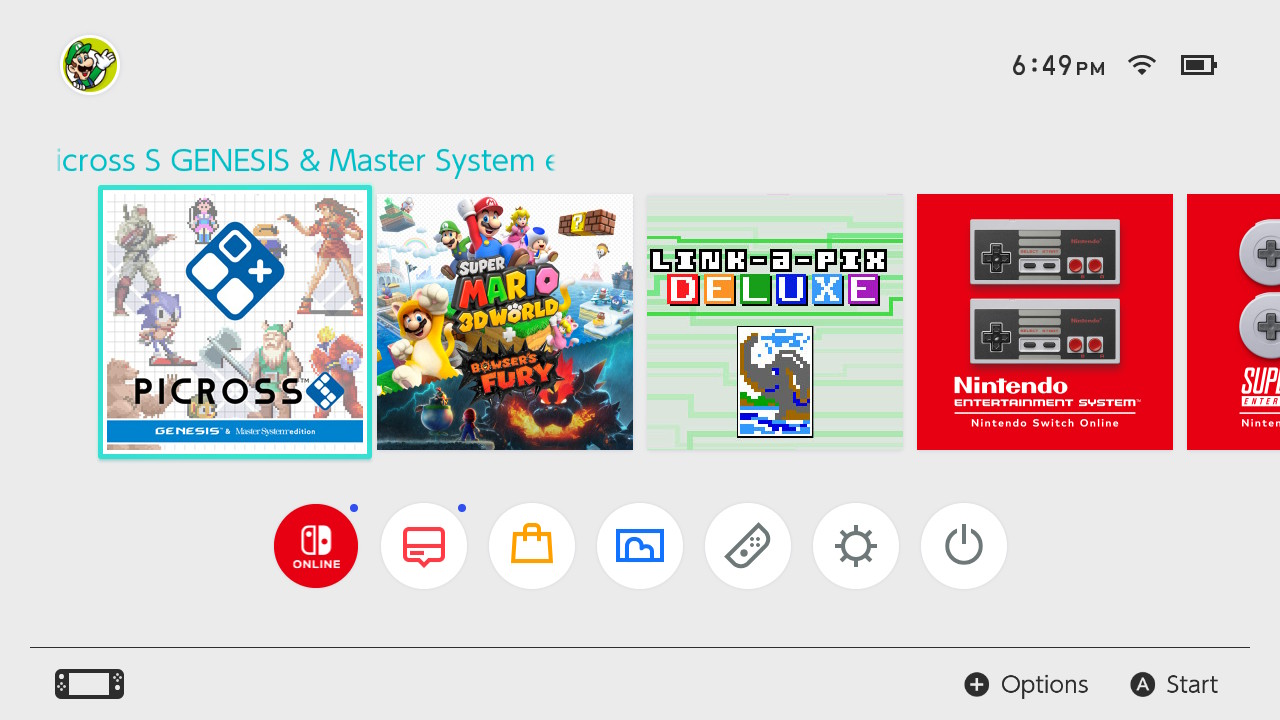
I've been playing Picross S: Genesis and Master System. The best aspect of it, compared to other Picross games, is that the puzzles don't get unmanageably large as difficulty increases. I've played Picross titles where the endgame puzzles were expected to take over 2 hours, so to have difficulty hinge on, well, difficulty instead of attrition is refreshing.
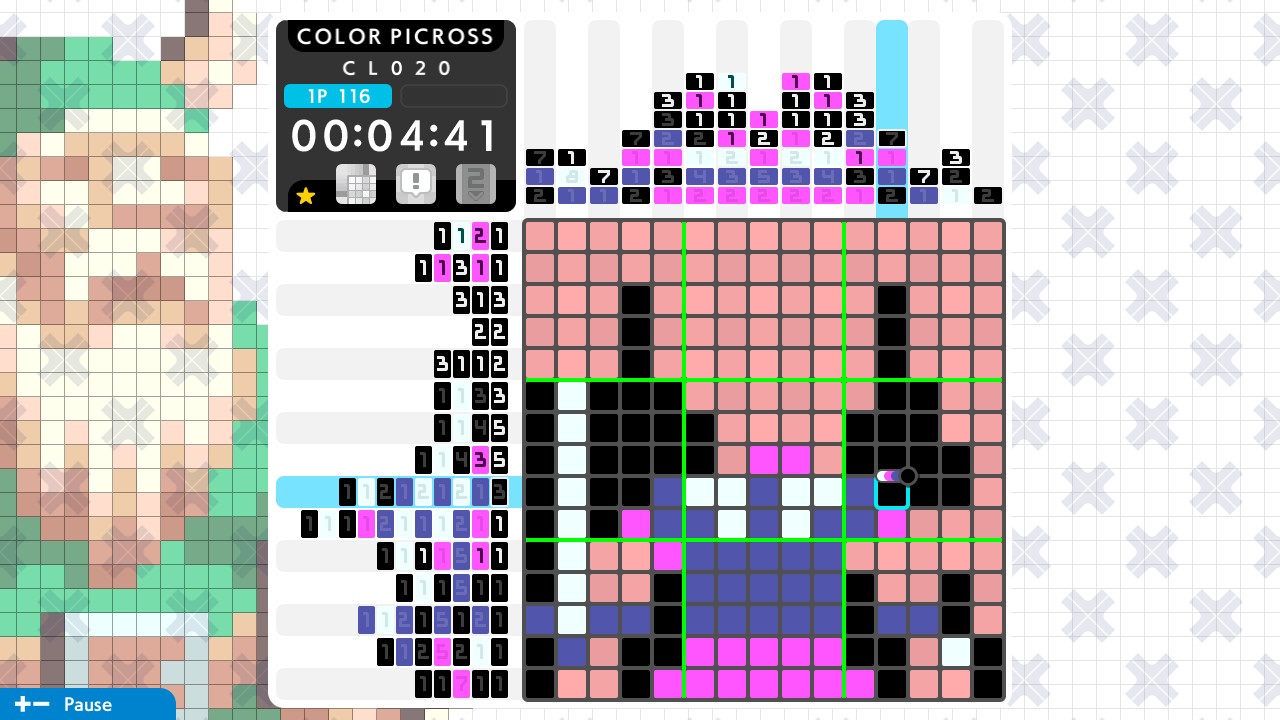
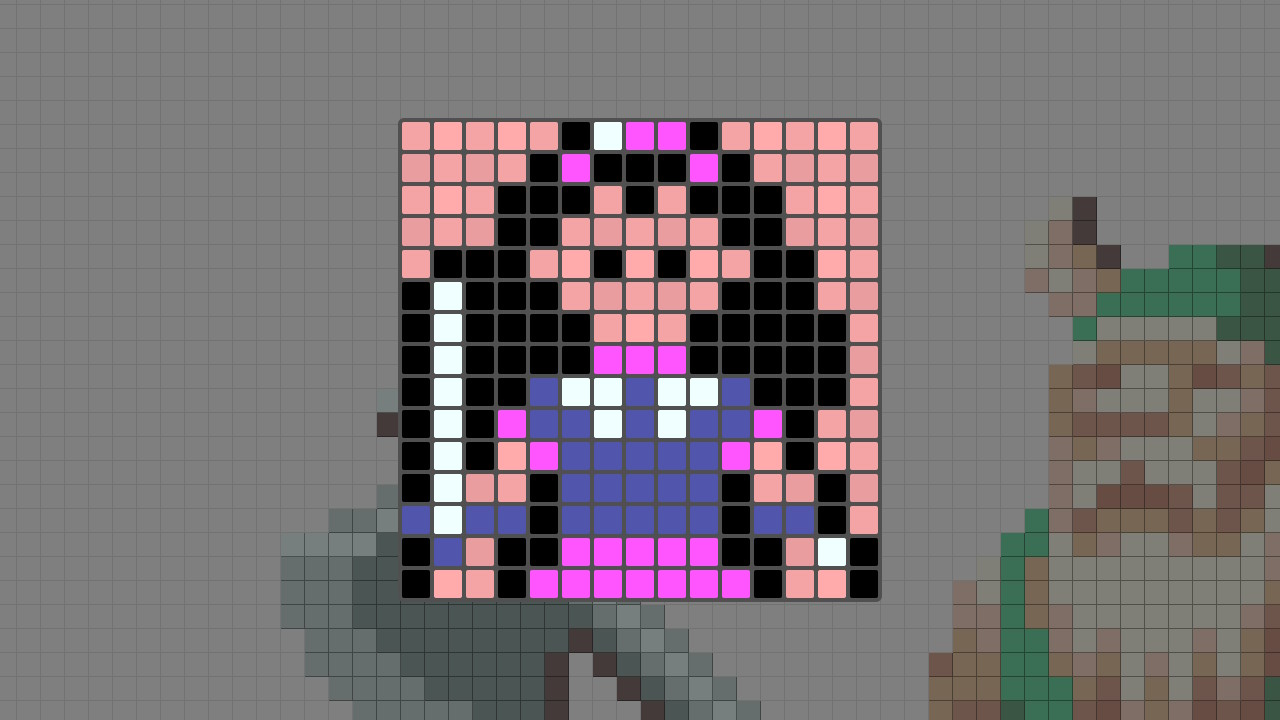
The big problem is that part of the joy of Picross is seeing what you're solving come together as the puzzle progresses, but, frequently due to disparities in the original pixel resolutions vs. grid size, the puzzles don't really look like anything, even when you've solved them. For example: what is this?
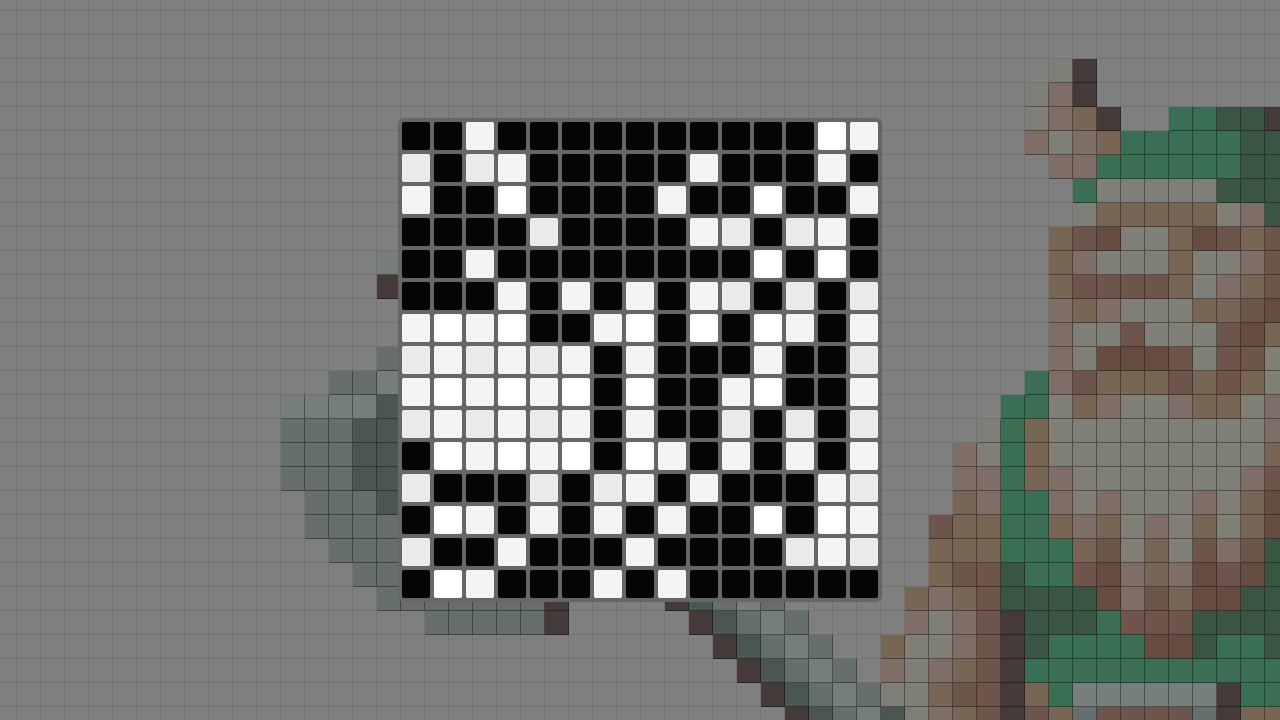
If you like the games about which I post on my main site, you've encountered the subject of this puzzle before!

You'd be forgiven for not recognizing Wren, though. How about this puzzle?
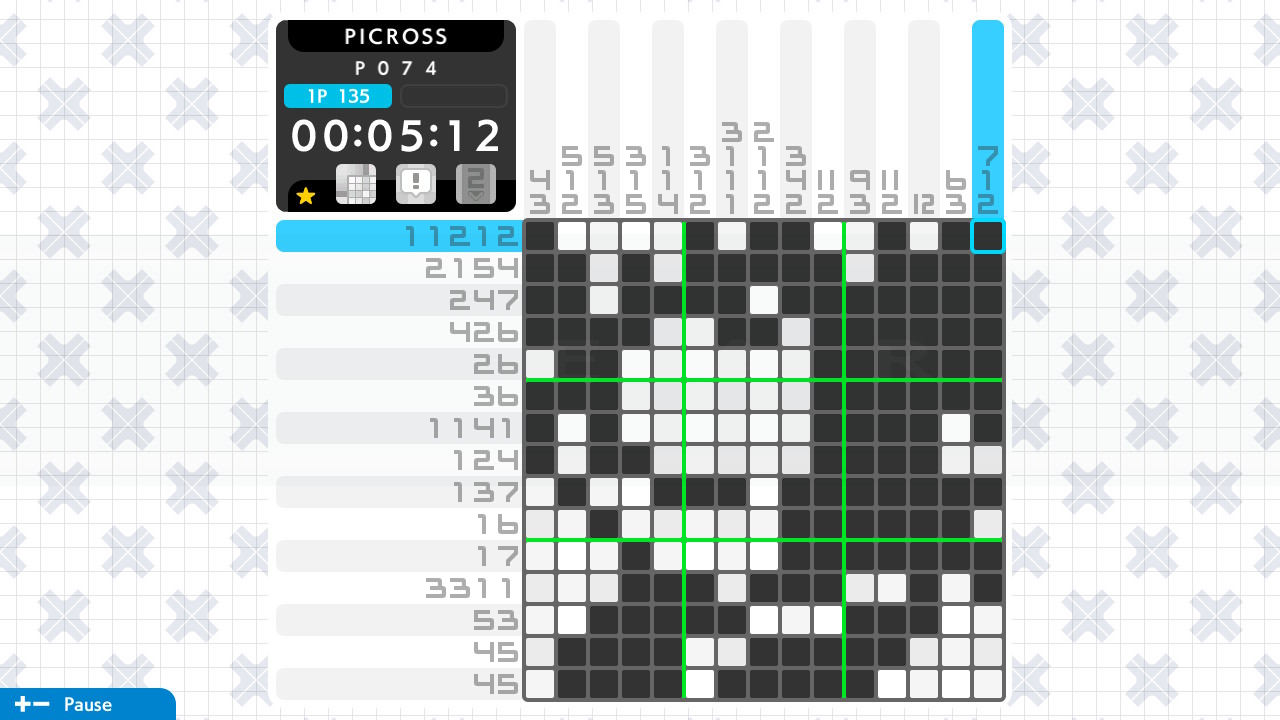
The likeness is better but still not great.
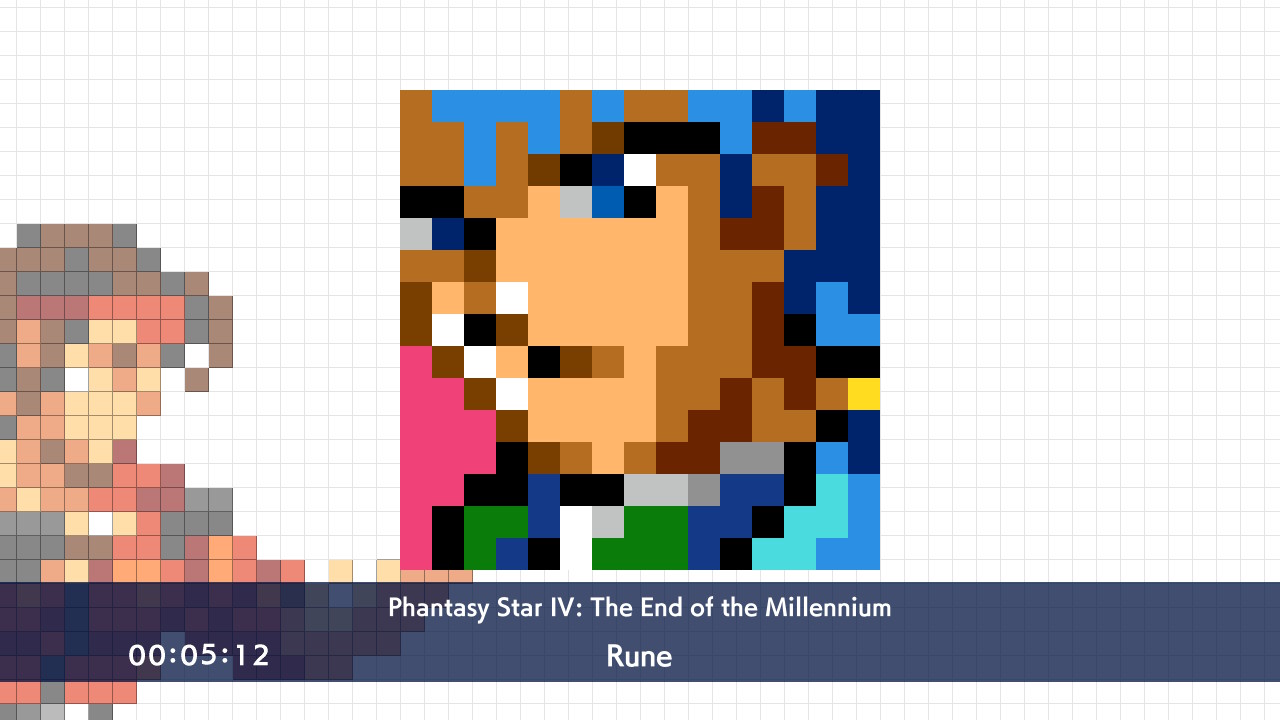
That's not his portrait, of course.

(Taken from Modern Retro Gamer; sorry, the wiki doesn't have it for some reason.)
They're using these weird...derezzed recreations, I guess you would call them, to fit the Picross grid. Sometimes they stray a bit further from recreations. Wren's looking a different way from his original portrait:
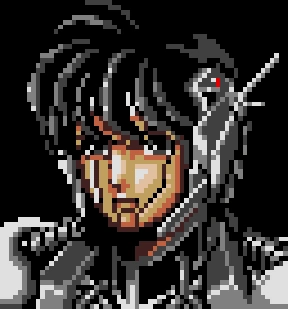
And then there's Rika:

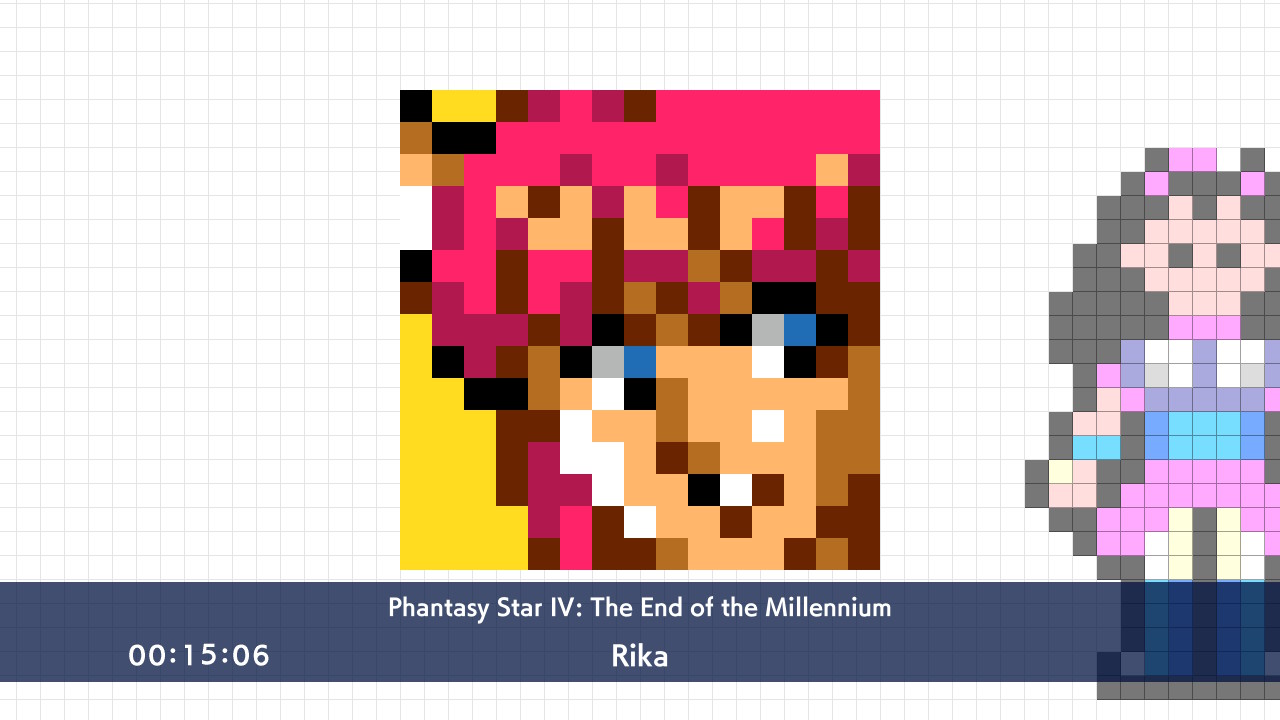
I've wished they'd make new art for these puzzle titles that draw from pixel games instead of just giving you freeze-frames of well-known art you've seen countless times, but this stuff seems like splitting the difference to no one's satisfaction. It comes off as lackluster approximations of better art, which is what it is.


Keep your eyes on Rhys & Rolf here while I lodge some miscellaneous complaints. There are ten pages of regular black-and-white Picross but only three of full-color Picross, which is a shame considering the bright palettes of the Genesis's standout titles. The game includes a third mode, "Mega Picross," where lines and hints for said lines bleed into each other, but it layers so many rules upon unintuitive rules upon Picross's elegant structure that I couldn't keep track of them all. (That Mega Picross actually *recycles art* from the other modes didn't help my engagement.) The game provides dozens of hours of entertainment, but I had to complain regardless.
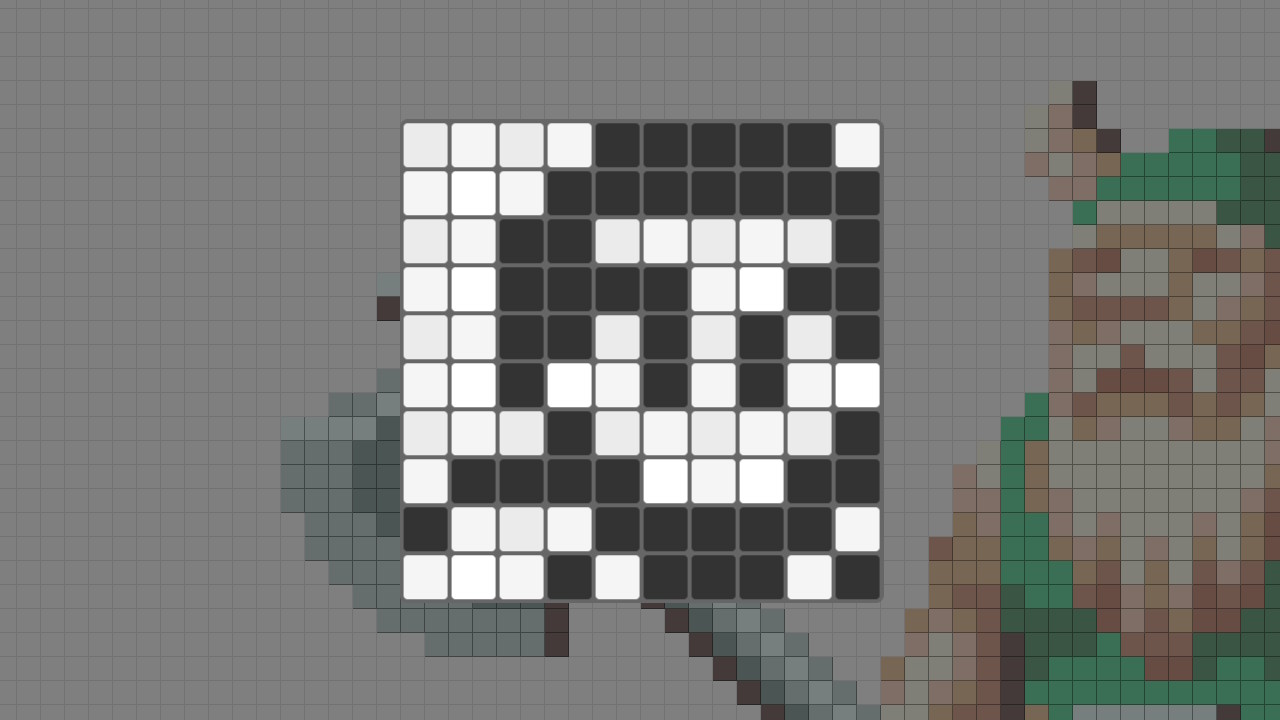

Finally, an accurate likeness.
ETA: ADDING MIEU FOR COMPLETIONISM:

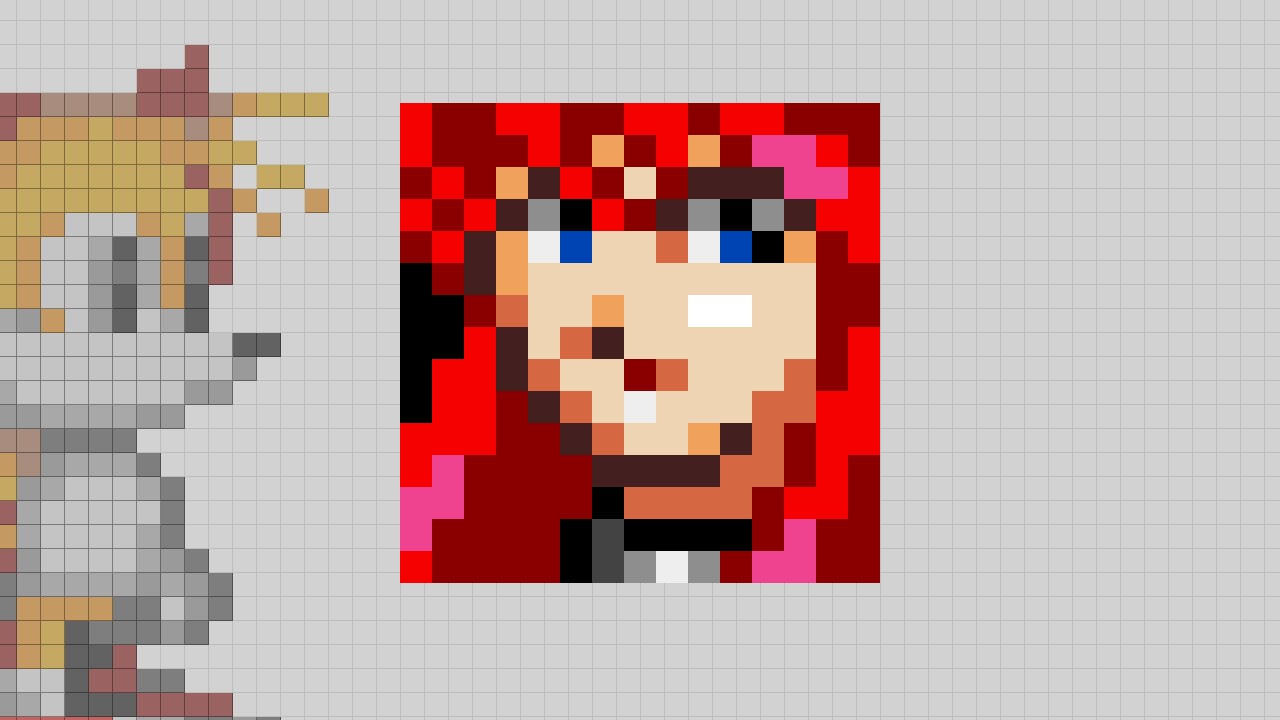
Page 36 of 56
